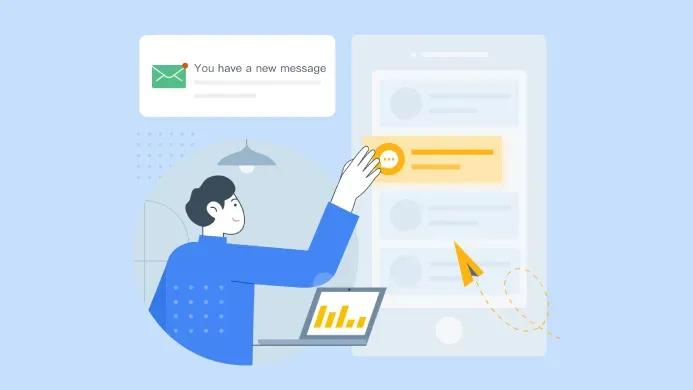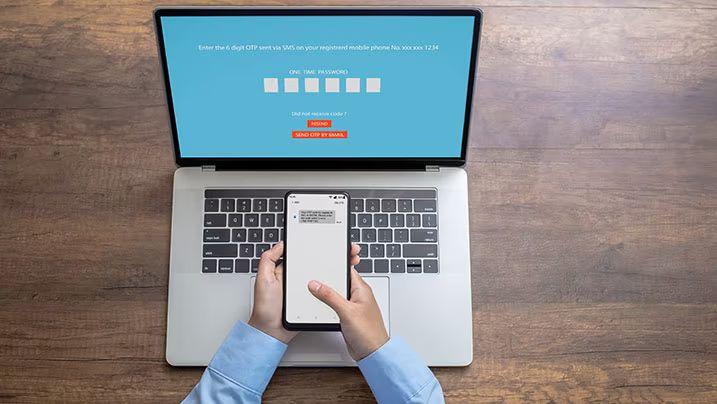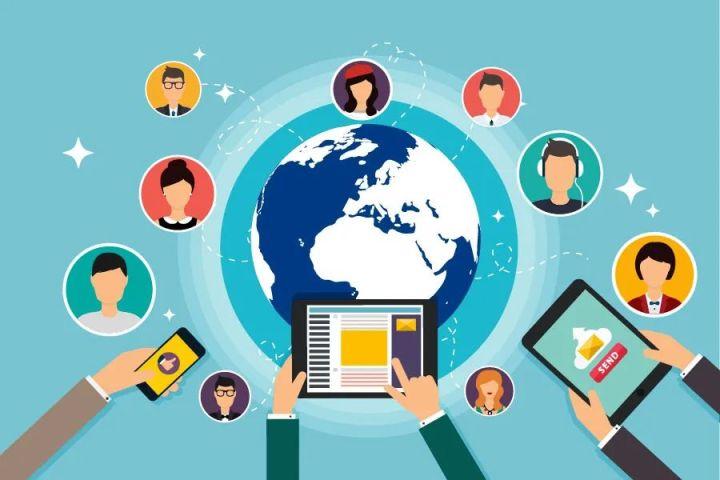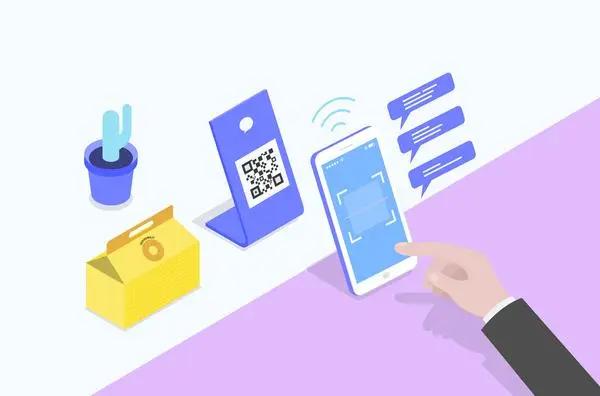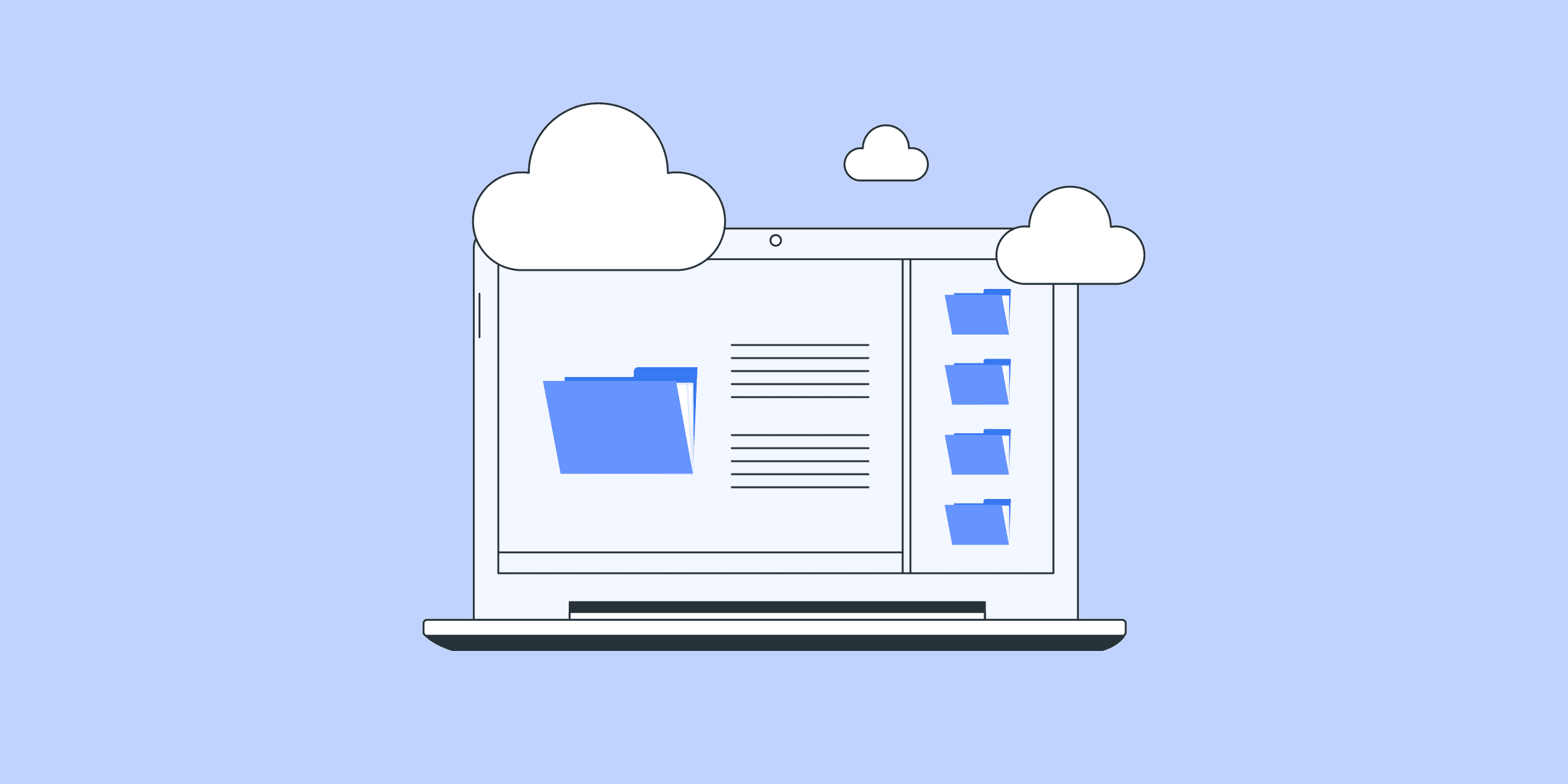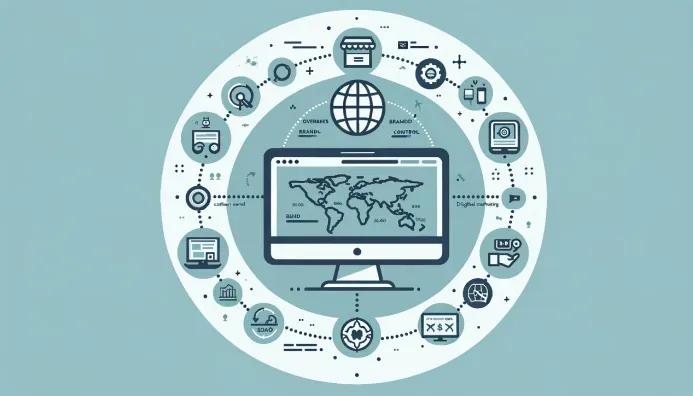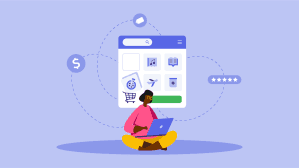客服系统

How government can meet the rising demand for digital services
The pandemic has undoubtedly accelerated digital transformation for organizations of all sizes and across all sectors. With that change, Canadians’ expectations for streamlined, simple digital services are shifting, too.Citizens are now looking for consumer-grade experiences from government. With demand for digital experiences increasing across all generations of Canadians, government has an opportunity to streamline their services for the digital age.We recently polled Canadians to better understand the overall citizen experience while accessing government services. And it’s clear there are some challenges with current processes. But many Canadians believe their experience navigating government services would be simplified if more digital choices were available, such as live chat functions and mobile-friendly options.Click the image below to see our infographic that uncovers more about the opportunities Canadians see for accessing government services and where digital workflows have the potential to transform the experience through speed and simplicity. You can also download the complete Citizen experience in Canada reportAccessibility note: The infographic is transcribed below the graphic.
Transcript of infographicCitizen experience: Unpacking access to government servicesWith the global pandemic putting digital transformation on the fast track, expectations are shifting—including for government. See how Canadians feel about access to government services and where there’s opportunity to deliver great experiences.Experiences matterA great citizen experience has a positive impact on opinions.61% of Canadians say positive experiences with public services improve their overall perception of government.And 56% of Canadians say good experiences increase the chance of future interactions with government.But accessing services can be a challenge.46% of Canadians rely on someone else to help them access public services.Why?3 in 10 need help because the process is too complicated.2 in 10 say they don’t know how to do it or where to go.Starting off on the wrong footChallenges accessing government services start early.6 in 10 Canadians have faced challenges making contact with the right government department.Why?52% say it was hard to get through to support, and phone lines were busy.25% couldn’t find the right contact information they needed.24% got bounced around to different departments.And 40% say they faced a technical challenge, including using the website or portal.Digital can make a differenceDemand for digital is here, with most Canadians preferring to access government services online and on mobile.8 in 10 Canadians think navigating government services would be simpler with more digital tools.What services would help?8 in 10 say greater use of automation or live chat functions.And 3 in 4 want mobile-friendly options.The global pandemic has shifted expectations long term.3 in 4 say the pandemic has made them more open to accessing government services digitally.And 85% want access to government services digitally after the pandemic ends.The digital customer service opportunityConsumer brands are doing a better job of customer service than government.8 in 10 believe consumer companies provide better customer service than government.4 in 10 say better customer service would have improved their recent dealings with government.Governments have an opportunity to deliver the customer service Canadians want with digital tools.84% want real-time support, such as live online chat formats or SMS text messages for real-time support.Deliver a better government digital service experience.See how LIKE.TG can help.servicenow.com/solutions/industry/gov.htmlThis online survey was facilitated by Edelman in collaboration with Angus Reid. The study was in field between March 15 and 20, 2021, in collaboration with Angus Reid. It included a nationally representative sample of 1,500 Canadian adults aged 18+, and was offered in both English and French.
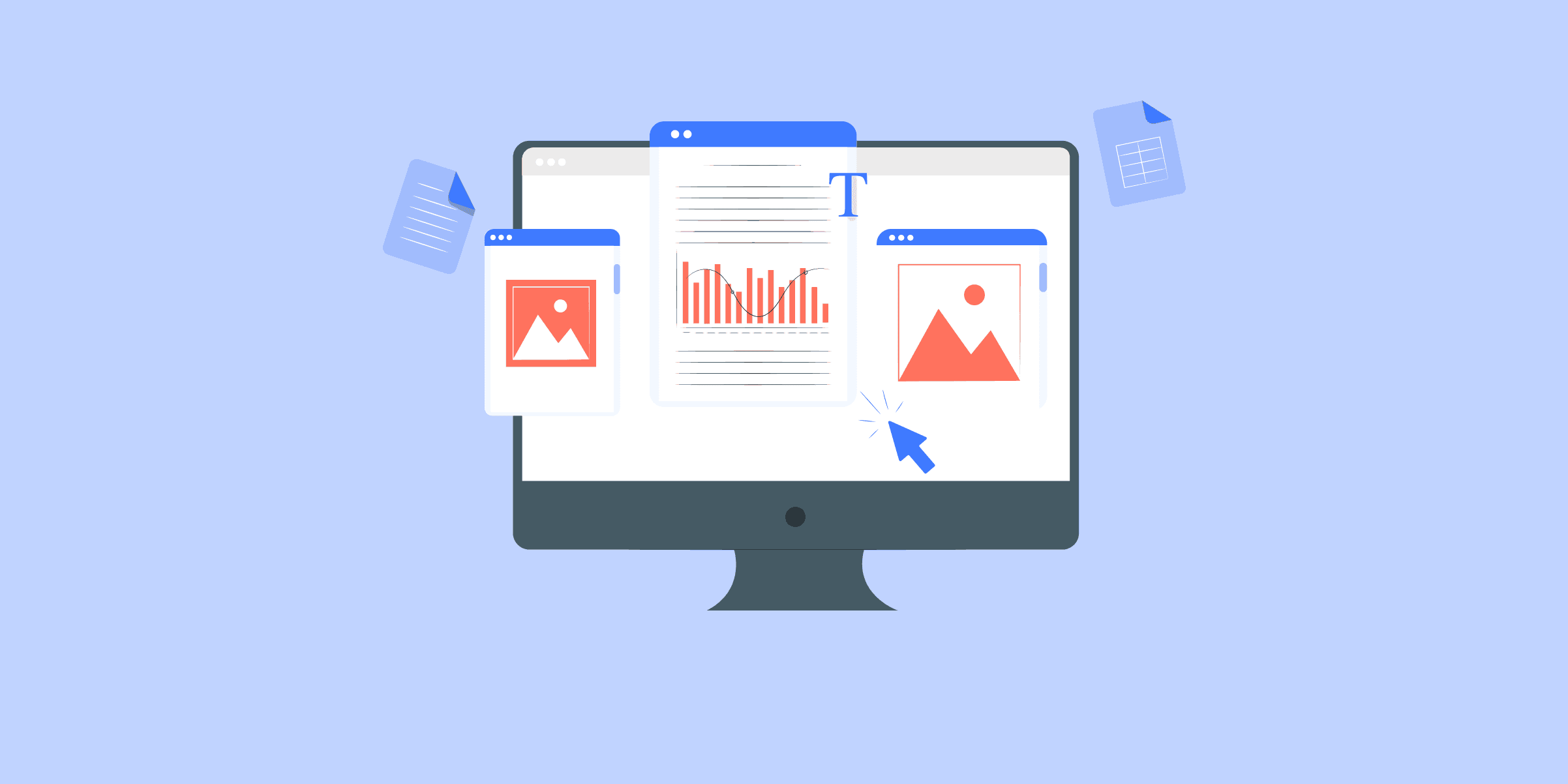
Digital transformation in government and the citizen experience
There are many moving parts when it comes to the digital transformation of government and the citizen experience, and just as many questions about how to make it happen.What lessons can the government learn from the private sector in creating high-quality digital services and experiences for citizens? What role does digital identity play in delivering these services? And what factors would enable the government to simplify its digital transformation journey?We explore the answers to these questions and more in our second episode of the Canadian Leadership Exchange, where we met with Imraan Bashir, partner of cyber and digital solutions at KPMG Canada to discuss how the Canadian government can evolve the way it delivers digital services to its citizens.Imraan breaks down how digital transformation in government should not be treated as a single project to be completed by a certain date. Rather, digital transformation is the ongoing effort of improving agility and responsiveness to ensure government is able to meet the evolving needs of citizens.When it comes to improving how the government manages digital identities and the citizen experience around them, Imraan explains that the various personal attributes and documents belonging to each Canadian need to be handled in way that is privacy respecting and convenient.The Canadian government is currently evolving the way citizens use digital identities by eliminating unnecessary barriers to the experience. In provinces like Alberta and B.C., citizens can possess a digital identity and use it to access both provincial and federal services online without having to manually provide personal information.Watch the video below to learn more about how government can successfully digitize citizen services with a practical approach to digital transformation.
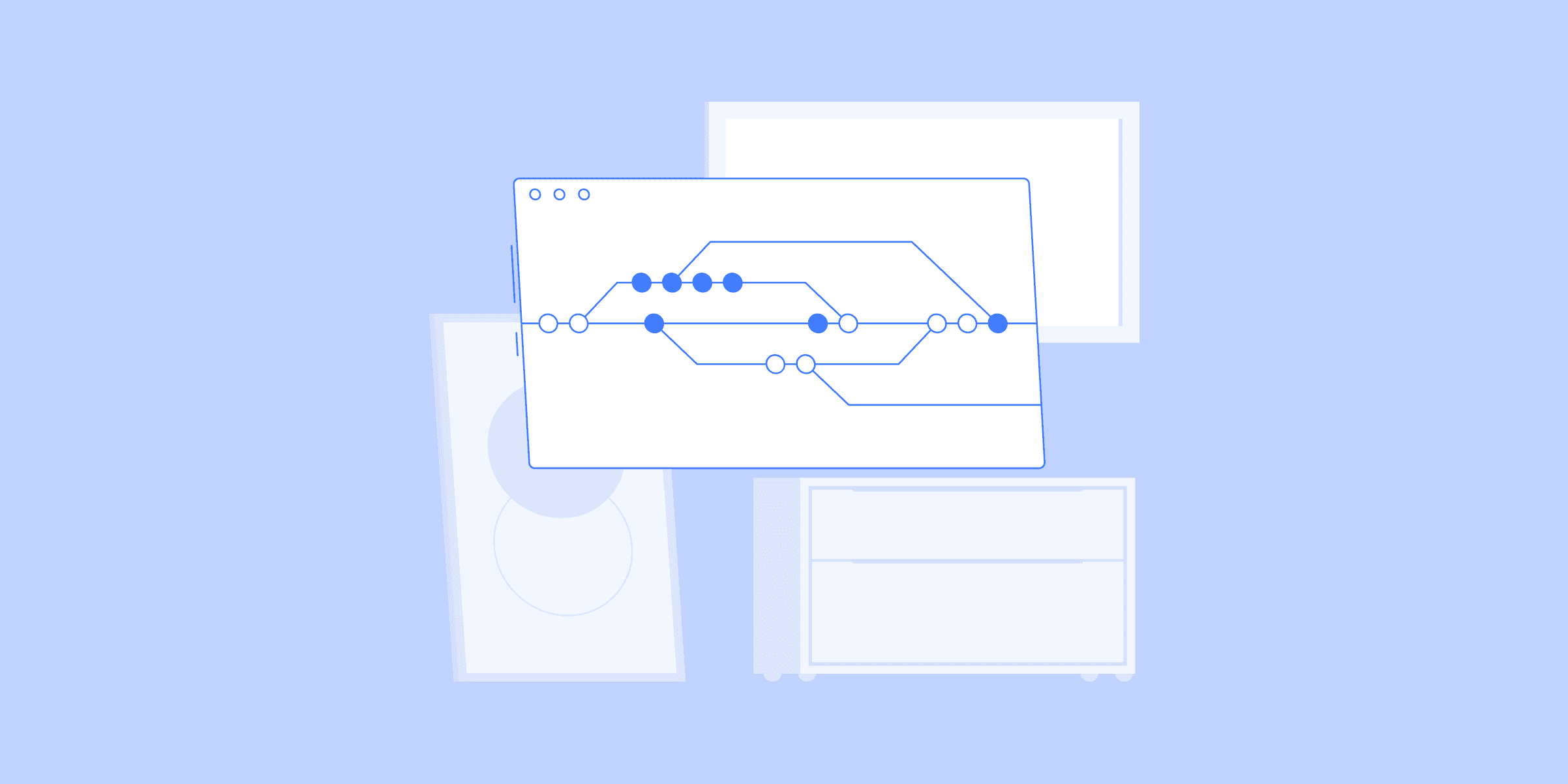
Increasing agility and rapid change during a crisis
Agility within agency information systems is critical in times of rapid change and crisis. Interoperability and transparency are essential to federal agencies’ ability to deliver services which can change to meet fast moving adoption of new business process and policy change. No matter how robust a technology ecosystem becomes, how much data it holds, or how many users it serves, it should never become so complex that it can’t quickly and easily provide insights and meet government agencies’ goals. That means the technology must offer the ability to seamlessly integrate with other technologies and provide full transparency across the agency while maintaining necessary security postures.One proven way federal agencies can enable both integration and organization-wide visibility is to shift from manual-based processes to digital workflows supported by machine learning and artificial intelligence. This type of digital transformation is the driving force behind a modernization strategy that makes it faster, more cost-effective, and easier to share information and provide services while increasing overall contextual awareness across the enterprise.A single platform with digital capabilities, process automation, and machine learning, especially one that’s cloud-based for scalability, can empower agencies to improve the delivery of services and enhance outcomes for their employees and citizens alike. Whether agencies are meeting the needs of military service members, veterans, Medicare beneficiaries, or other citizens, an advanced platform allows them to provide best-in-class services and user experiences.Ensure collaboration via a knowledge hubOne way to get past the challenge of departmental and data silos while bringing new levels of collaboration into the agency is to implement a knowledge hub. The hub can simplify the sharing of information both internally and between outside organizations, healthcare providers, academic institutions, and others.The knowledge hub can also offer a dedicated safe space for innovation. It’s a place for agencies and their partners to share best practices, implement standard operating procedures, and accelerate innovation to advance the delivery of care or other services. In addition, the hub can help with facilitating app rationalization, developing leading-edge technologies, and consolidating sites throughout the organization for a centralized location for information.What makes a knowledge hub successful is a platform that can work with the multiple systems that agencies are currently using. Many organizations rely on a mix of new, legacy, and open-source technologies. It usually doesn’t make sense fiscally or from an operations perspective to replace the entire system. Instead, a platform offering interoperability can connect all of the disparate systems to improve interaction, engagement, information sharing, and identification of market trends.Building a knowledge hub that benefits the entire agency requires the right architecture. Find out how to architect IT to meet critical mission and business needs.Gain cross-agency visibility with digital processesAnother key to reaching agency goals and mandates is having end-to-end visibility. This allows, for example, organizations providing healthcare services to access the electronic health records (EHRs) of military service people or beneficiaries. This provides a line of sight into an individual’s complete medical history, including when and where the person received treatments.With digital processes, agencies can share EHRs with other organizations and providers that have the proper clearance. When service personnel are relocated to different bases or Medicare beneficiaries move to new locations, their records can move with them. Agencies benefit by removing the time-consuming manual process of filling out paper forms. Digitization also avoids having redundant forms that can lead to confusion. Instead, it ensures complete records are readily available to allow providers to make the most informed healthcare decisions.With digital processes and omni-channel visibility, agencies can experience improvements in everything from patient care via faster access to treatments to efficiently scheduling patients with the appropriate providers. Enhanced visibility helps with other business aspects, too. It allows effective communication between stakeholders, offers the ability to view key agency milestones, and enables the tracking of records from their origin to their current status.A new brief from LIKE.TG offers additional details on bringing visibility into an agency, then optimizing the benefits.The Now Platform offers tech integration and transparencyTechnology continues to advance healthcare. With the Now Platform® from LIKE.TG, those advancements can happen at a faster pace through agency and industry collaboration, and with full visibility across digital workflows.The modern digital platform helps federal agencies realize the promise of health IT. The platform has been shown to cut manual government processes from four to six weeks to just one to two days. It has delivered time-to-value productivity gains by end users that amounted to more than $20 million over three years.Organizations that accelerated their development efforts of apps and digital business processes with the platform improved their Net Promoter Score (NPS) by 29 percent and Customer Satisfaction Score (CSAT) by 25 percent. The platform can help any agency reach its goals faster and get more value from current technologies already in place.
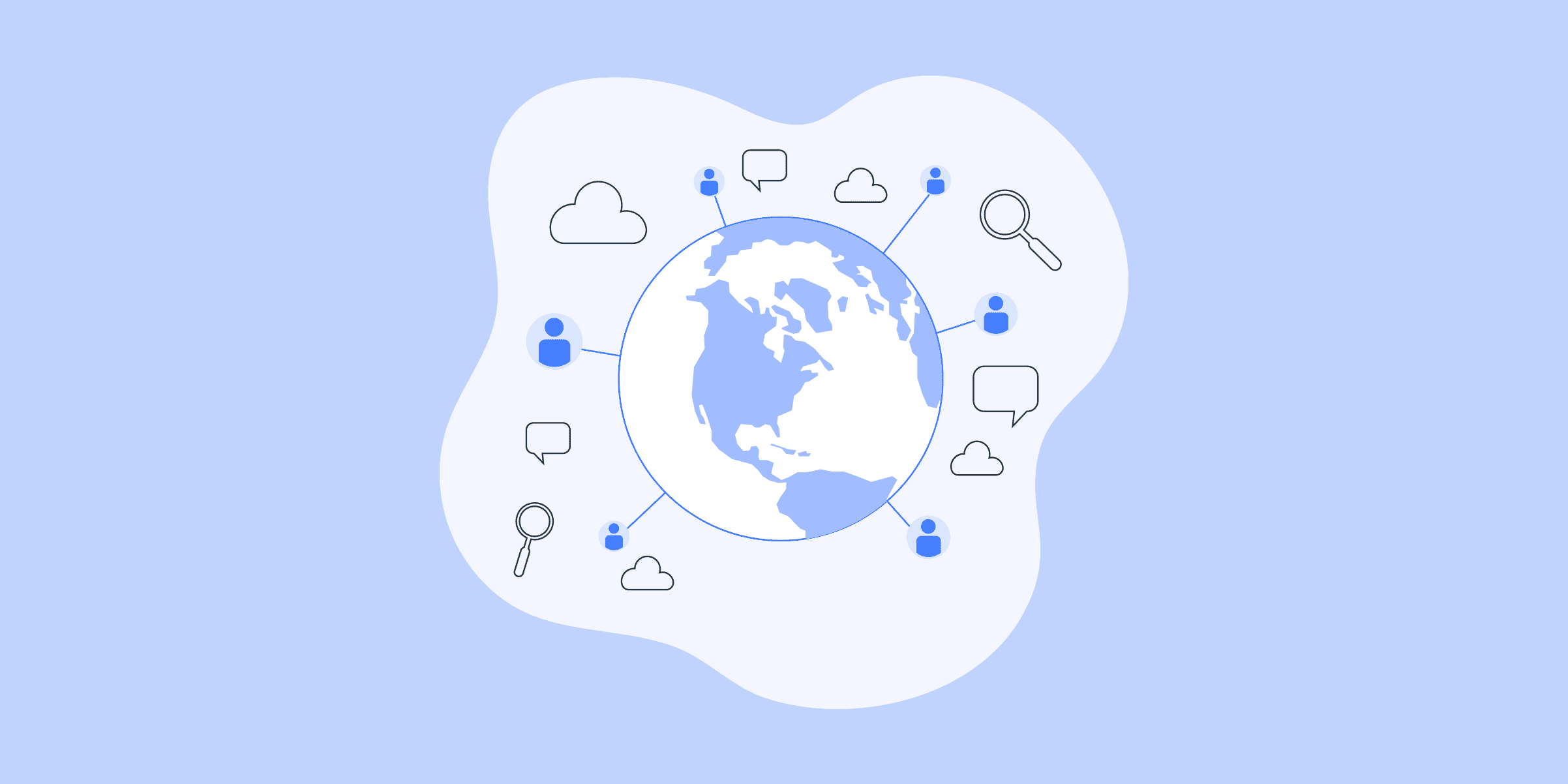
5 ways federal agencies can augment a zero-trust architecture
A May 2021 executive order mandated that federal government agencies invest in both technology and personnel to centralize and streamline access to cybersecurity data, accelerate migration to secure cloud architectures, and advance toward a zero-trust architecture.A zero-trust architecture doesn’t refer to a predefined, out-of-the-box network security solution. It’s a strategy based on an agency’s cybersecurity plan that contains a collection of zero-trust concepts. It requires multiple security solutions that cybersecurity teams need to orchestrate in their environment.To help avoid disruption to daily operations, federal agencies can simplify their zero-trust architecture by including an enterprise platform strategy. This will help centralize and streamline cybersecurity data using multiple technologies from different manufacturers to avoid silos.The Now Platform® is a single, cloud-based architecture platform that provides enterprise capabilities for legacy software, point security solutions, and agency workflows. It can augment a zero-trust architecture by addressing five high-level goals identified by the Joint Defense Information Systems Agency (DISA) and National Security Agency (NSA) zero trust engineering team.1. Modernize information enterpriseAccording to the DOD Zero Trust Reference Architecture, IT modernization includes eliminating agency or command silos. In the past, federal agencies divided IT responsibilities and IT budgets along organizational, operational, and doctrinal boundaries. This led to the development of many capabilities in silos, multiple security philosophies, and multiple security solutions installed in the environment.A zero-trust framework gives an agency the flexibility to choose best-of-breed technologies that best meet their zero-trust cybersecurity expectations. However, having a variety of technologies from different manufacturers on the network could introduce complexity and impede operations.The Now Platform has a single data model and contains powerful cross-functional workflows that connect people, functions, and systems in a zero-trust environment. With extensive third-party integration capabilities, the Now Platform can connect security solutions selected by an agency, helping network administrators bridge organizational gaps, technology gaps, and process gaps.2. Simplify security architectureThe Zero Trust Reference Architecture document claims, “A fragmented approach to information technology and cybersecurity has led to excessive technical complexity, which creates vulnerabilities...and high levels of latency.”When connected to the Now Platform, security solutions and monitoring tools can be coordinated to work simultaneously to respond to security events. They can activate automated cross-functional workflows to notify security officers, quarantine suspect systems, update vulnerable assets, and lock suspicious accounts.The Now Platform can correlate threat intelligence feeds collected from multiple security tools, providing agencies with an integrated, real-time view of compliance and risk across the entire agency. This could save administrators time on analysis while providing them with streamlined critical information to make informed policy decisions.Security Incident Response, a SOAR security solution on the Now Platform, is a key component of a zero-trust architecture. It can be configured to consume data from point security solutions or from a security information and event manager (SIEM) solution, such as Splunk, so that incidents can be automatically prioritized.
3. Produce consistent policyTo achieve and maintain a zero-trust architecture, administrators must be consistent when applying policies. If policies are not clearly defined, documented, or enforced by agency security applications and secure workflows, the agency could be at greater risk of a security breach.“Waivers and exceptions to written policies, based on short-term operational needs, have led to inconsistently managed, reconfigured, and/or disabled security systems, thereby making them porous and ineffective,” the DOD Zero Trust Reference Architecture reports.To maintain a healthy zero-trust architecture, cybersecurity administrators define security policies so they can control hardware and software configurations on the production network. Policies are also defined for onboarding new capabilities, new or updated software packages, new or updated services, new IT hardware, new cloud providers, and new personnel roles.The Now Platform can be leveraged to support an agency’s IT acquisition policies. Powerful onboarding workflows can provide governance to an agency’s acquisition processes, helping to ensure a security and risk evaluation is performed prior to a technology purchase or an installation.ITIL change management capabilities on the platform can help administrators prioritize configuration change requests. Subsequently, change request workflows will help ensure each request is properly analyzed and approved before it’s implemented into the production environment.4. Optimize data management operationsThe DOD Zero Trust Reference Architecture states, “While data standards and policy exist, they are disparate and inconsistently implemented.” As a result, challenges exist between applications, organizations, and external partners. Many agencies are not able to “fully leverage the benefits of cloud computing, data analytics, machine learning, and artificial intelligence.”Cybersecurity administrators can centralize and streamline access to cybersecurity data by integrating agency security tools and solutions into the Now Platform. Platform integration provides a central repository for agency security tools to exchange data or to share relevant information. It also gives analysts quick access to all the information they need to make informed policy decisions.When cybersecurity data is centralized and streamlined, machine learning frameworks available on the Now Platform will be able to analyze enormous amounts of data in seconds, providing analysts the information they need to produce relevant knowledge articles. Furthermore, text analysis processes that are powered by artificial intelligence (AI) will help security administrators identify major incidents while providing suggestions for mitigating problems.5. Provide dynamic credentialing and authorizationIdentity, credential, and access management (ICAM) is designed to create a secure and trusted environment in which users can access authorized resources. ICAM allows the agency to see who is on the network at any given time.The Now Platform can help administrators support their ICAM security solutions by providing a self-service portal with predefined “access request” workflows with approval capabilities that document each request. This creates an audit trail with detailed information about the request, such as why an employee needs to access a resource and for how long access is required.When access is approved, workflows can notify resource owners or trigger additional processes external to the platform. The Service Catalog can also provide prepackaged onboarding requests that trigger automated workflows to request a Common Access Card (CAC) and network access for a new employee.Learn more about how LIKE.TG helps government agencies improve efficiency.
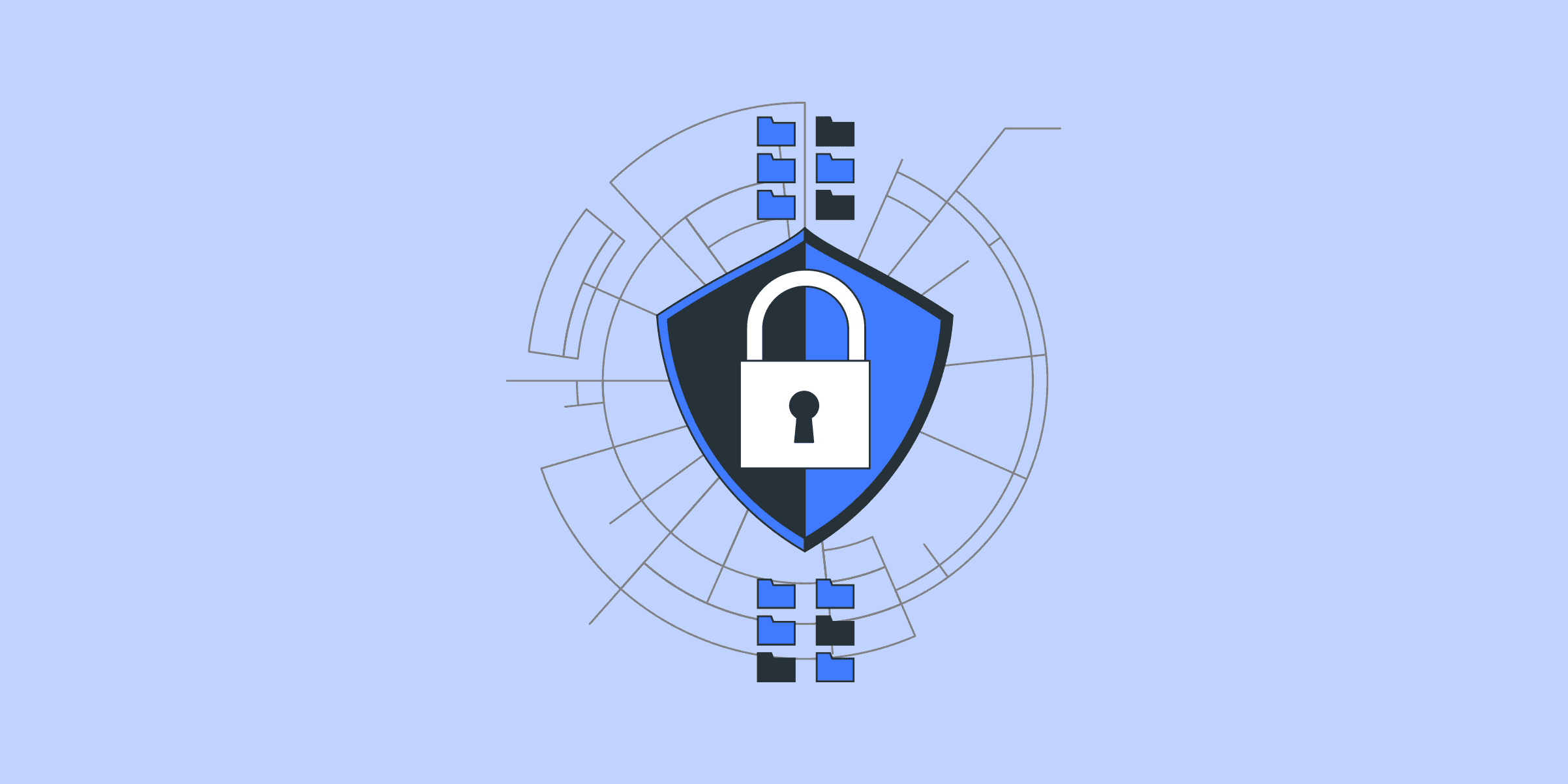
How government agencies are improving citizen and employee experiences
Government agencies had to adapt to a rapid increase in demand for services in 2020. They also had to adjust to a remote workforce. Many found themselves picking up the pace of their digital transformations and trying to modernize during a global health crisis. Perhaps above all else, many learned the importance of using the right digital tools, platforms, and services.They still have a long way to go. Government agencies have traditionally purchased technologies that support silos serving their department functions well, but they don’t allow information sharing across departments.A human-centric design approachLIKE.TG helps agencies accelerate their technology strategies to synthesize silos of excellence and create cross-functional systems of record. The goal is to deliver a commercial-like experience when providing citizens with enterprise services.For instance, the mayor of Los Angeles requested a system that helps citizens find COVID-19 testing stations, monitors how many people use them, and tracks positive results. LIKE.TG helped the city design, build, and launch a custom COVID-19 testing app in only 72 hours. It was a quick process because the Now Platform has out-of-the-box applications, already certified and accredited, that an agency can subscribe to as needed.LIKE.TG also helped when Delaware’s unemployment claims increased dramatically during COVID-19, jumping from about 450 to 16,000 per week in the pandemic’s first month. The state unemployment agency had no metrics to track the number of open cases pouring in from multiple websites, emails, and call centers—nor did it know how long it took to process claims.The agency got LIKE.TG App Engine up and running as a temporary solution in one week. Then, it brought in LIKE.TG Elite Partner GlideFast Consulting, which introduced a self-service portal with virtual agents and 24 new knowledge bases. All that streamlining enabled Delaware to process 35,000 unemployment cases in just a few weeks, about the number it had previously handled in an entire year.A McKinsey podcast notes very few government agencies use artificial intelligence (AI) or supervised machine learning. The Now Platform can provide those capabilities to help accelerate digital transformation and a human-centric design approach.
Enhanced human decision-makingModernizing the workforce and adopting new technologies:
Empowers employees
Consolidates human resources functions
Improves workforce efficiency
Allows faster productivity
Lowers costs
New Zealand Trade and Enterprise, a government organization that supports New Zealand businesses around the globe, used LIKE.TG to develop six unique employee journeys. The employee experience was considered the top priority, and the solutions—such as one for new hires that covers everything a new employee needs to do and know—were a big hit.As a result, the company’s net promoter score for employee experience, specifically with people leader experience, went up almost 100 points.Enterprise service deliveryMany government agencies still use paper-based systems and manual processes. Digital transformation can help them create a modern and agile IT infrastructure. Government agencies at all levels, of course, require highly secure environments when operating in the cloud—and they can get that with ServiceNow.The fully certified and accredited Now Platform deployed in Microsoft Azure cloud service has many levels of security certifications. LIKE.TG provides more than 80 different compliance standards through Azure.Download the Government Book of Knowledge to learn more about how your government agency can better meet external and internal expectations.

Modernizing service delivery for government employees and citizens
Modern digital experiences play a major role in how government agencies serve their communities. Digital enhancements can streamline processes, improving reliability and accessibility for employees and citizens.Both groups need to access services through multiple channels. Modernized solutions that enhance employee experiences can improve service delivery across the board.Simplifying employee experiencesIn our seventh episode of the Canadian Leadership Exchange, we spoke with Sheila Robinson, assistant deputy minister and chief information officer at British Columbia’s Ministry of Social Development and Poverty Reduction. She shared how the ministry is improving digital experiences within its Information Services Division (ISD) so that ministry employees can better deliver services to British Columbians.To offer service delivery throughout the ministry virtually, and to provide remote access for those delivering and receiving services, ISD looks for digital tools and platforms that are intuitive, accessible, manageable, and data-centric—without increasing workload.Throughout the public sector, services need to be modern, accessible, and streamlined. Robinson sees three fundamental shifts driving digital accessibility:
Hybrid models
Virtual and face-to-face delivery of services
Services provided through apps
Ensuring digital transformation successAs leaders embark on transformation initiatives within their workplaces, people-centered solutions can help break down silos between departments. This streamlines workflows across teams and can significantly improve project delivery times.Robinson’s team collected feedback from staff about which solutions worked and which didn't. From there, they focused on creating a single source of truth, built on LIKE.TG, that would provide real-time insights. This allowed teams to see and share how their services were being used and where improvements could be made.Watch the video to learn more about how the ISD enhanced employee experiences and service delivery through transformative digital solutions:

4 trends shaping the future of federal government work
At LIKE.TG's annual Federal Forum in March 2022, more than 1,400 government leaders and contractors convened for the first time since the start of the pandemic. We recently surpassed the two-year mark of a rapid shift to remote work, and federal leaders reflected on the widespread modernization that took place during this period.Although the number of federal employees returning to offices continues to rise, according to Axios, the world of work has changed dramatically. As it continues to take shape, speakers underscored the importance of federal employees using agile, efficient, and effective workflows.Let’s explore four key topics from the event that are shaping the future of federal government work.1. Hyperautomation and zero-trust architectureThe pandemic illuminated outdated and inefficient workflows across the federal government, which initially hindered employees from working productively at home. In the Digital Transformation in the Modern Workplace and Embracing Zero Trust for a Resilient Federal Government sessions, federal leaders explained how a shift to remote work and policies, such as President Biden’s Executive Order on Improving the Nation’s Cybersecurity spurred their agencies to:
Modernize legacy applications.
Embrace automated solutions.
Deploy zero-trust cybersecurity strategies that allow employees to securely work from anywhere.
The US Department of State operates embassies in more than 190 countries, in addition to 29 domestic offices. Ken Rogers, chief digital strategist at the department, acknowledged some agencies and bureaus within the organization were further along in their modernization journey than others at the start of the pandemic. His team helped integrate tools across the State Department for all employees to use to enhance productivity and achieve their unique mission goals.“It’s been a continuous process of technology iterating far faster than an organization can adapt, so you really have to think through where does the value of the technology meet the business of the organization,” he said. “[This ensures that] I’m introducing the right things to the organization and not stressing the organization out because change is such a challenge for everyone.”Rogers explained that by consolidating the State Department’s contracts and migrating to the Now Platform®, his team achieved greater continuity and, ultimately, enhanced employee experiences and workflows.
2. Attracting Gen Z talentIT mandates continue to serve as forcing functions of digital transformation across the federal government. In the Lunch and Congressional Commitment to IT Modernization panel, Nichole Francis Reynolds, vice president and head of global government relations at LIKE.TG, spoke with members of Congress about the modernization efforts agencies must make in 2022 to help attract and retain federal talent.Less than 7% of the federal workforce is under the age of 30, according to the Partnership for Public Service. More than 29% is above the age of 55, meaning hundreds of thousands of jobs will soon become vacant due to expected retirements.Rep. Gerry Connolly illustrated the importance of enacting policies that provide lower barriers to entry for younger talent, including internship opportunities, hybrid work models, and streamlined hiring processes.3. DEIA initiatives and equal opportunitiesIn addition to the pieces of legislation Rep. Connolly outlined, the Biden Administration’s Executive Order on Diversity, Equity, Inclusion, and Accessibility provides a blueprint for agencies to modernize their recruitment efforts. LIKE.TG Chief Equity and Inclusion Officer Karen Pavlin led a panel on the ways agencies can advocate for—and empower—diverse individuals in the federal workforce.“We recognize we have to stay competitive, not just as a federal agency, but also as an employer of choice across all sectors,” said Traci DiMartini, chief human capital officer at the US General Services Administration (GSA). “The only way we’re going to do that is by embracing diversity, equity, inclusion, and accessibility.”DiMartini and her team established GSA’s equity team. It’s a group of cross-functional leaders who are committed to identifying and understanding the barriers that policies and programs present to supporting underserved communities.Establishing decision-making teams with varied perspectives and using tools such as data analytics in the recruitment process can help. Moves like these can ensure all current and prospective federal employees have equal opportunities to advance in their careers within the federal government—our nation’s largest employer.
4. Accelerating service deliveryAt the height of the pandemic, Americans relied heavily on government services, from small business owners obtaining relief funds to citizens collecting stimulus funds and information about COVID-19.I had the privilege of moderating the last panel session of the day, Accelerating Service Delivery, where federal and IT leaders explored the implications of the President’s Management Agenda and the Customer Experience Executive Order. We discussed how agencies can carry forth the administration’s vision by using automation, analytics, and enterprise software delivery with low-code development.Barbara Morton, deputy chief veterans experience officer at the US Department of Veterans Affairs (VA), stressed the importance of operationalizing moments that matter most for customers. Her team conducted in-depth interviews with veterans to understand the quality of care they received when visiting medical facilities.These insights informed new programs, such as the Red Coat Ambassador Program, and technology, including a redesign of VA.gov, which Morton’s team deployed to improve veteran satisfaction levels by nearly 20%.The VA recently appointed its first chief design strategist and team of customer experience strategists and design specialists. Morton said this allows the organization to navigate the culture of government while prioritizing the needs of veterans.Looking aheadThe next year will undoubtedly present many opportunities for federal agencies to accelerate their digital transformation and shape the future of work. Our team continues to serve as a trusted partner to the federal government in helping them achieve these mission goals.At the Federal Forum, we shared our Impact Level 5 provisional authorization. It will enable the US Department of Defense, its mission partners, and select federal agencies to further modernize by moving highly sensitive data, including controlled unclassified information and unclassified national security systems, to LIKE.TG cloud-based solutions hosted on Microsoft Azure Government.Watch the Federal Forum sessions on demand.

How private and public sector organizations can better serve veterans
As we continue to reflect on the ultimate sacrifice made by service members following the 77th anniversary of D-Day, which took place on Sunday, June 6, we recognize the invaluable contributions all servicemen and women have made—they’re the backbone of our nation.We also recognize and appreciate the support military families provide. And yet, all too often, US veterans are overlooked when transitioning from active military duty to civilian life.As a US veteran, I have firsthand experience in making this career move and know how daunting it can be. Private and public sector organizations have a collective responsibility to ensure these individuals are given the necessary tools, resources, and training opportunities to enable a successful transition into professional life after leaving active duty. While there are countless ways to support our veterans, reskilling and providing better access to medical services are two examples of how to make an impact.Provide training opportunitiesThe social distancing requirements associated with COVID-19 impacted American jobs across industries. A study by the US Bureau of Labor Statistics revealed the pandemic likely caused the unemployment rates for veterans to rise in 2020 for both males (6.5%) and females (6.7%). With more veterans out of work, it’s critical for organizations to provide access to training opportunities that will help unemployed vets build the skills employers in high-demand industries value.The federal government has expressed interest in investing in partnerships with other government organizations, businesses, and higher education institutions to provide citizens with greater access to job training, which means veterans will likely have more reskilling opportunities.Key industries are uniquely positioned to develop training programs and employment opportunities that are specifically designed for vets. Although some private organizations are already granting veterans access to training programs that offer certifications, these programs tend to vary in size. That’s why more organizations might consider developing their own programs as a way of helping vets re-enter the workforce.Veterans possess the soft skills needed to excel in many different professional environments, especially in IT. However, they often struggle to showcase these skills on their resumes. The ability to lead people, solve problems, create and collaborate with teams, and adapt to change are competencies valued in the civilian workforce.With the help of certification programs and guidance from trusted HR organizations, veterans can build tactical skills and gain a better understanding of how to translate the expertise from their military careers.Improve healthcare accessIn addition to ensuring veterans are equipped with the skills needed to re-enter the workforce, it’s imperative that we provide better access to healthcare services through the US Department of Veterans Affairs (VA).Last year, the VA was awarded $19.6 billion in supplemental funding under the Coronavirus Aid, Relief, and Economic Security (CARES) Act and the Families First Coronavirus Response Act to prevent, prepare for, and respond to COVID-19.A majority of these funds went to the Veterans Health Administration and the VA Office of Information Technology. Although the VA Office of Information Technology used some of its funds to expand its telehealth capabilities, $9 billion hasn’t been used yet, according to the US Government Accountability Office.This suggests there are still opportunities for the VA to enhance veterans’ access to hospital services using the untapped funding. This includes investing in tools that can improve the healthcare services and overall experiences veterans receive, as well as vaccine management tools, such as those offered by LIKE.TG, which can streamline the time it takes to obtain a COVID-19 vaccine.It also includes investing in workflow technologies that help return the VA’s federal employees back to work, improve citizen and veteran services, and create better experiences.As we honor our vets who served on D-Day, we can and should do our utmost to support all vets returning to civilian life, with both industry and federal leaders identifying opportunities to support veterans during this inflection point. While there are many additional ways we can make a difference, setting these individuals up for success and providing better access to health services are two great ways to say “thank you.”Learn more about how LIKE.TG supports veterans through government workflow solutions.LIKE.TG, the LIKE.TG logo, Now, and other LIKE.TG marks are trademarks and/or registered trademarks of LIKE.TG, Inc. in the United States and/or other countries.
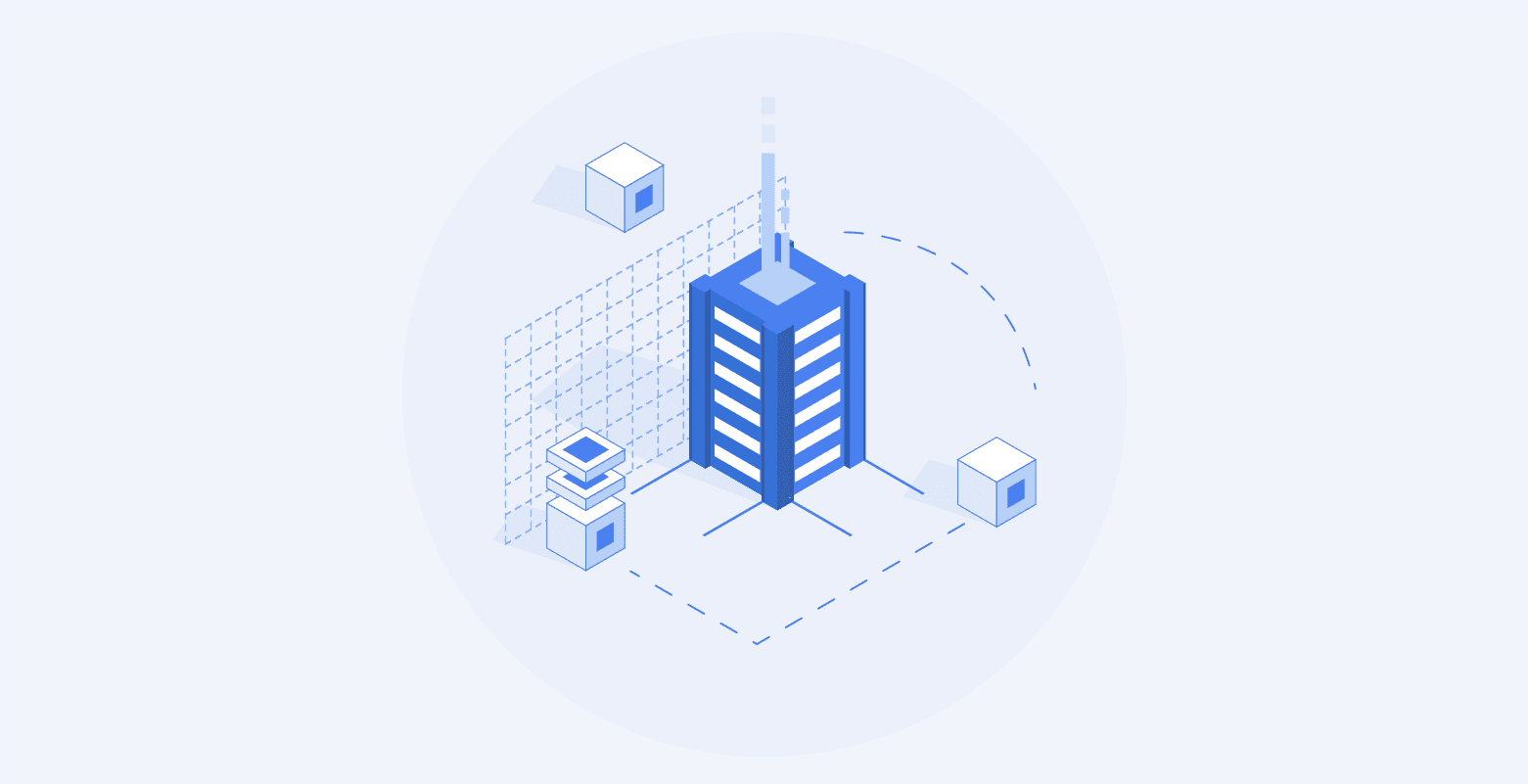
Transforming citizen experiences in federal healthcare agencies
Throughout my career as a federal government CIO, my teams and I continually strived to provide the best possible experience to anyone who interacted with our agency. In the age of COVID-19, this sentiment has never been truer, especially for agencies providing healthcare services to citizens, beneficiaries, veterans, or others.Government CIOs, like their private sector counterparts, are prioritizing the citizen experience to improve health service quality and access. Their focus is ensuring that every citizen interaction is consistent, visible, and relevant across all channels. The challenge healthcare organizations face, both in the public and private sectors, is that they can’t easily access and analyze all relevant data. Various departments using their own information, coupled with voluminous third-party data sets and data tools, has resulted in ever-growing numbers of data silos.Solving this problem and delivering consistent and relevant omni-channel citizen focused healthcare experiences must start with a platform that is highly scalable and capable of deep integration across a variety of tools. This type of platform, along with a company culture that trusts and embraces data, allows organizations to accurately predict and respond to citizen needs. Those responses can be automated, self-service, or via representatives who have data at their fingertips to make informed decisions.Best practices pave the way to better experiencesThe private sector is providing higher customer satisfaction than federal agencies, according to the American Customer Satisfaction Index. As a result, healthcare agencies are paying higher costs and dealing with more citizen frustration than private companies.Industries like retail are stitching together a comprehensive 360-degree view of their customers. The view allows companies to develop products and services to meet customer needs, and also understand how to curate meaningful customer journeys and hyper-personalized communications.Federal healthcare agencies are starting to take a similar approach. According to IDC, 26 percent of agency executives are deploying key performance indicators (KPIs) to measure the customer experience and advocacy. See IDC’s advice for how agencies can implement private sector best practices to enhance the customer experience.The government should follow suit by using data to better understand the citizens they serve. For healthcare service providers, this can include social determinants of health, medical histories, prescription drug use, and other relevant information. These details help agencies better meet beneficiaries’ needs, which in turn improves health outcomes, lowers costs, and increases citizen satisfaction.Digital workflows connect and improve patient careFederal healthcare agencies have a mandate to move toward digitalization. Digital workflows and processes enable a range of benefits, including automation, fast and easy information sharing, and improved service quality. To optimize digitalization, agencies need a single, centralized platform that’s capable of integrating data and workflows from across the federal, state, and local healthcare ecosystem, then sharing the insights.A common problem with many legacy systems is that they don’t offer interoperability. The inability to connect technologies and offer visibility into data sets limits digital capabilities, which in turn negatively impacts the citizen experience. By contrast, a platform built for workflow will facilitate collaboration, the sharing of best practices, and drive innovation, all of which will improve medical care and the delivery of innovative health services.The right platform can also consolidate data in a single location while providing cross-functional agency workflows, with the citizen at the center. This allows agencies to improve health service quality, access, and citizen experiences through effective and efficient care. To get started, review the 10 steps to transforming the customer service experience using automation, machine learning, AI, and other advanced processes.Develop a responsive citizen service environmentFederal agencies at the forefront of digital transformation are using digital solutions to automate manual or paper-based processes. They are saving time, money, and resources by eliminating redundant processes. Automated processes can also highlight and prioritize citizen needs. This helps agencies respond quickly to enable better outcomes, reduce overall costs, and ensure continuity of care.Digital processes also improve self-service capabilities. Citizens or their families can access forms quickly, fill them out only once, have them securely shared with the proper healthcare providers, and have full transparency into who is using them.These same techniques can lower the cost of healthcare. One way to do this is by investing in a platform that can serve as a knowledge center or provide knowledge-center support. This allows anyone with the proper authority to access digital forms, data, or other information from any location at any time. Platforms like this can offer cloud-based customer service management (CSM) solutions to enable an intelligent digital transformation that remains focused on the citizen experience.In federal healthcare agencies, CSM takes a patient or beneficiary-centric approach to digital experiences, rather than an agency-centric view. CSM applications can provide citizen information management in areas such as customer history, problem tracking, and contact management. For answers about creating citizen service excellence using CSM, read this QA from IDC.Enhance citizen experiences using an advanced platformThe Now Platform® from LIKE.TG offers all the core capabilities that enable federal healthcare agencies to quickly and efficiently digitize workflows and run them at scale. It delivers enhanced omnichannel experiences through a single platform to accelerate innovation and reduce issue resolution times. With LIKE.TG’s support, agencies can deliver on their mandate to improve health service, quality, access, and experience through effective and efficient care.
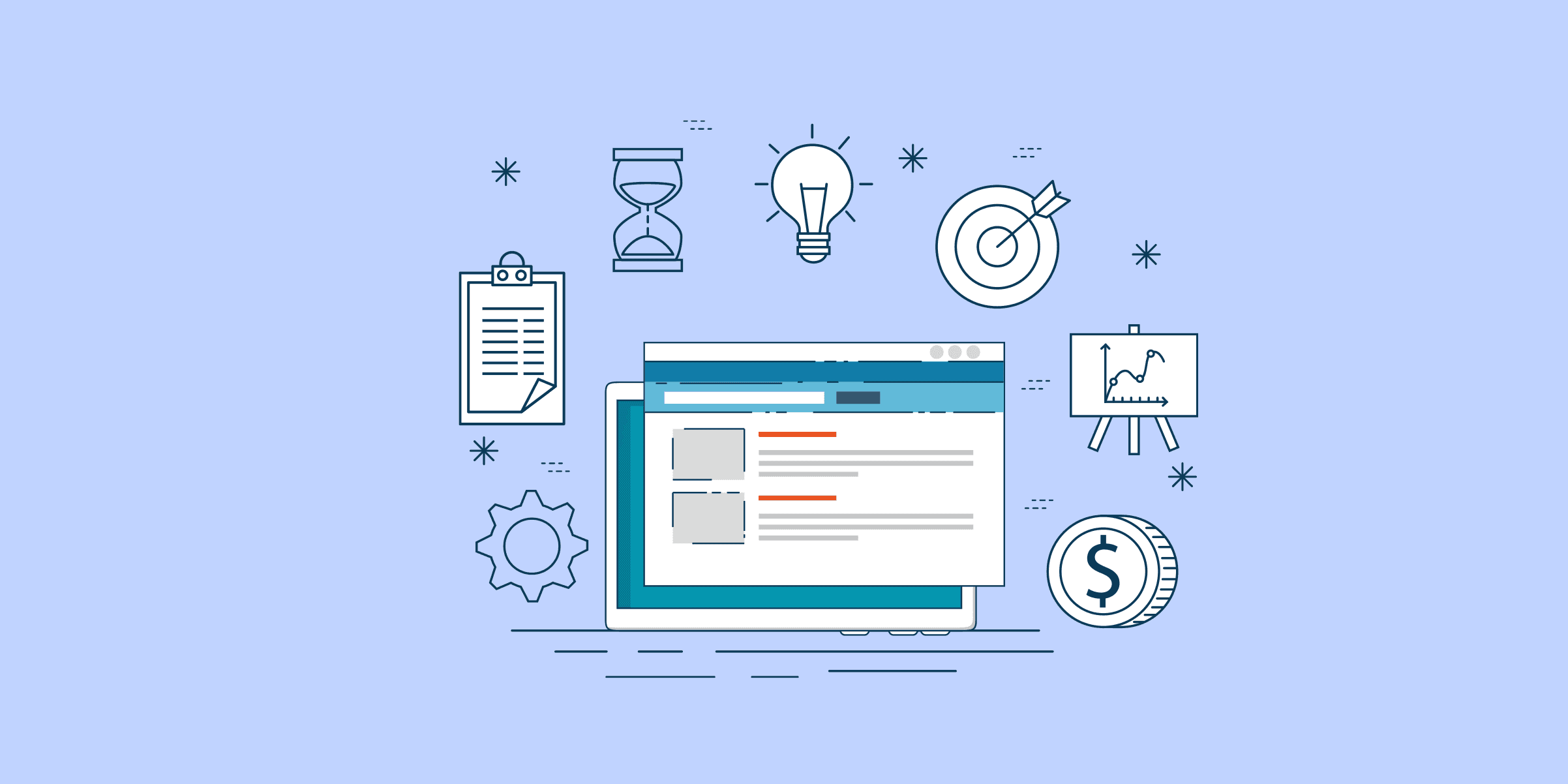
Governments need a Total Experience model for service delivery
At its core, government should be human centered. To deliver the best experiences for people, agencies must put citizens and employees first. Unfortunately, it’s not uncommon for many public sector agencies to rely on legacy operating models to get work done. These models were not built with the user in mind, but rather the task at hand. Now, as governments tackle digital transformation, new opportunities arise to make service delivery and operations more human and more citizen-centric.Government has entered an era of human-centered design, where priority is placed on people’s needs and what is most convenient for them. It’s about putting user experience first.What it takes to build an experience-led agencyEmployee Experience (EX) and Customer Experience (CX) have both become major priorities for many government agencies. While both are clearly important, they are often treated separately, creating missed opportunities for truly transformational experiences.The future of government work is changing. As technology advances, demographics shift, and citizen expectations evolve, agencies are re-evaluating and rearchitecting how work gets done. Governments need to adapt and consider how to improve all interactions, both employee and citizen.There’s an undeniable link between a good employee experience and better citizen experience. When employees are happy and motivated, they provide better service for citizens. But experiences can’t be improved overnight. It’s the intersection between humans, processes, and technology that yields the biggest change.Total Experience (TX), a strategy that creates superior shared experiences by connecting the employee and customer experiences, seeks to unite these for a better outcome for all concerned.The role of technology in TX“It’s human-centric products and services that make the best use of emerging and emerged technologies, be they the relatively simple website to advanced AI enabled by the cloud,” said Simon Cooper, director of digital government-focused customer strategy at Deloitte. “That in turn transforms how government operates and how those experiences are delivered in terms of services.”The public sector is seeing growing demand for faster, digitally-enabled service delivery. Technologies such as AI, automation, and cloud are helping agencies meet that demand. Deloitte outlines how automation and AI provide an opportunity to improve efficiency and ease the burden for employees and citizens by:· Doing more work: Computers can process more data at a higher speed—enabling more work to get done without increasing employee workload.· Doing work better: Optimized processes help agencies improve quality, lower costs, and enhance speed—freeing up employee time for more strategic tasks.· Doing work differently: AI gives agencies the ability to redesign work as a partnership between human workers and intelligent machines—taking advantage of the unique strengths of both.With the implementation of automation and AI into day-to-day processes, employees can focus their efforts on more pressing and high-level issues. This means employees are more satisfied and can deliver better experiences for citizens. But despite the potential that digital technologies offer to government, innovating with a TX lens comes with its challenges.Removing the roadblocks to building the government of the futureThe government of the future will be experience-driven—but getting there is no simple task. Like any new initiative, government leaders face their own set of challenges in building experience-driven agencies. A 2021 LIKE.TG and ESI ThoughtLab report surveyed 900 senior business leaders in five industries across 13 countries to identify the top-of-mind challenges leaders face when building an experience-driven organization:1. Uncertainty around the potential ROI and business case, as an experience focus is still a new concept for many leaders and management teams2. Lack of shared metrics for EX and CX, making it daunting to bridge the gap and develop a unified strategy3. Overall employee resistance to change driven by employees wanting to stick to known approaches and ways of operatingHow these challenges are addressed will influence the success of your TX strategy. To be truly experience-driven, government agencies will need to go beyond treating customer and employee experiences as separate disciplines and take a TX approach to interactions. With a more holistic strategy, agencies can improve citizen outcomes, lower errors and costs in government processes and programs, and better attract and retain an engaged workforce.Discover how government leaders globally are driving total experience efforts.

How Australia can elevate government customer experience
The pandemic shifted us all online, whether we wanted to or not. It forced the public sector to adapt more than most industries, requiring citizens to interact digitally with governments to receive the health and financial support available to them.Digital technology promises to elevate government customer experience (CX) by scaling services, cutting wait times, and reducing costs. Yet, according to the 2022 LIKE.TG customer experience survey in Australia and New Zealand, government services haven’t maintained fast, responsive digital delivery. Consumers called out the public sector as one of the worst-performing industries when it comes to CX.What can governments do to improve CX outcomes? Here are three steps.Connect the disconnectedOne unique challenge the public sector faces is the need to provide for everyone. That requires designing experiences for both people who are connected and comfortable with technology and those who aren’t or don’t have access.According to a 2021 EY report, nearly one-third of people believe technology will not be equally available to all groups in society.That’s true in Australia, where many people living in remote and rural areas lack access to technology and/or reliable internet. Some Australians could be left behind.The EY report further found one-third of citizens want governments to use more digital technologies for service provision and bridge the technology and connectivity gap.Ask for feedbackGovernment agencies and departments must listen to what taxpayers are saying. Then they need to incorporate that feedback into their service offerings.“Digital transformation is only successful if it provides a better experience than before—and the only way to know that is by getting good feedback,” shared Victor Dominello, minister for customer service and digital government in New South Wales, at Knowledge 2022.Traditionally, governments didn’t want to know what people thought, he added. “But you can’t elevate the citizen experience unless you understand it. Now we’re actively inviting and providing easy channels to capture feedback...It’s a massive culture shift.”
Share dataLIKE.TG research revealed speed is the most important factor in good service for Australians. One way governments can improve this area is introducing a digital ID to validate residents so they don’t need to repeat themselves or log in multiple times.The Australian government has made some progress on this front, with its myGov portal for multiple services. It’s still limited to a handful of departments, as many state and local governments vary in their digital maturity.This technology offers promise. When the Department of Home Affairs introduced portals to manage returning citizens during the pandemic, they cleared a backlog, accelerated processing, and removed the risk of human error.The key to success with these types of technologies is data sharing, the absence of which is a concern for consumers, according to the LIKE.TG research. Nearly half (44%) believe a lack of ownership between departments leads to bad service. Additionally, 41% believe inefficient communication within an organization results in poor experiences.Connecting teams through technology and enabling data sharing can give governments a 360-degree view of the citizen experience. With this, agencies and departments can provide faster services arranged around an individual’s needs and life experience.What does the future look like?If a government is going to have a comprehensive view of its population to provide effective digital services, it needs to capture data from multiple sources and make that data available to all services that require it.One example is NSW Health’s IT platform, HOPE, which was co-designed by consumers, clinicians, and managers across New South Wales in partnership with the Agency for Clinical Innovation, eHealth NSW, and the NSW Ministry of Health. It’s built on the Now Platform.The system allows both consumers and clinicians to access real-time information, better understand what matters to patients, and support shared decision-making about care, treatment, and health interventions. It’s making services faster, more collaborative, and responsive to individual needs.It can also take data from both digital and analog inputs so that anyone can benefit—regardless of their digital capabilities.Improving government CX isn’t the work of a moment. By listening, incorporating feedback, and creating easy-to-access and compelling linked digital services, governments can deliver a seamless experience—one that leaves no one behind.Find out more about how technology can improve public sector services.

How secure tech can improve public service delivery in Australia
Australia’s government has big aspirations to increase public service capability and capacity. By reducing its reliance on external firms and bringing capabilities in-house, the government hopes to boost efficiency, improve spending, and become a more equitable, inclusive employer.This transition won’t necessarily be easy. Manual processes and disparate legacy systems will make it difficult for government agencies to deliver great employee experiences. To accelerate and expand its capacity to deliver services, government must streamline its digital infrastructure to:
Optimize the way public servants do their work
Automate repetitive, manual processes
Empower people to do their best work
At the same time, the Security Legislation Amendment aims to improve the cybersecurity of critical infrastructure in response to increasingly frequent and severe cyberthreats. Agencies must align the need for rapid digital transformation with critical security and compliance requirements, but how?Rising need for public service transformationMost government agencies rely on multiple legacy systems to complete work and uphold critical security requirements. Take the public service application process, for example. To address the current labor shortage, agencies are expected to hire thousands of new employees. If only 10% of applicants move on to the interview stage (as commonly projected), some agencies could be left juggling tens of thousands of applicants.Inefficiencies and opportunities for human error abound, from toggling between systems to entering data manually. Add in the need for comprehensive background checks and detailed onboarding for this high volume of workers, and the process quickly becomes unwieldy. It’s clear legacy systems and manual processes won’t be able to keep up.To improve recruitment efforts and track the talent pipeline more effectively, agencies need to simplify their onboarding processes. Automating an inefficient and error-prone process can exponentially amplify inefficiencies and errors.When done right, optimization followed by automation can free government workers to focus on high-value tasks, improving employee experiences and satisfaction.
Balancing security and complianceThe need for rapid digital transformation is clear, but government can’t compromise when it comes to security. Amid the Security Legislation Amendment, critical infrastructure entities—including government agencies—must adapt while supporting digital resiliency. The amendment emphasizes risk management planning and mandates incident reporting for systems of national significance.Compliance with these regulations will include giving government agencies:
Full visibility into IT and operational technology assets on their networks
Complete awareness of vulnerabilities
The ability to respond to threats quickly and effectively
Building the future of governmentThe LIKE.TG Protected Platform is uniquely positioned to help address these needs. Built on Microsoft Azure, it gives agencies access to the capabilities and utility of the Now Platform while keeping their data and support in Australia. Because the LIKE.TG Protected Platform is a software as a service (SaaS) platform, it’s possible to deploy it in weeks rather than years. The platform is assessed at the PROTECTED level by an independent assessor for the Information Security Registered Assessors Program (IRAP), assisting with the security and resilience of critical data and infrastructure.The secure platform empowers government to rapidly onboard new public servants, expand capacity, and comply with increasingly rigorous security standards.
Delivering real resultsIn May 2022, Australia’s Department of Industry, Science, Energy, and Resources (DISR) successfully implemented the LIKE.TG Protected Platform to streamline and automate enterprise service management for more than 4,000 employees. The department procured and implemented the platform in less than six months.“By using one platform to manage complex tasks and requests, we have improved our automation and streamlined a range of administrative tasks, enabling us to assign team members to more important work,” says Steve Stirling, general manager of ICT operations at DISR.“In our work with more than 100 Australian state and federal agencies, we see them facing increasing demands to deliver more with less,” says Eric Swift, vice president and managing director of LIKE.TG for Australia and New Zealand.“As a result of this go‑live, DISR will significantly improve its employees’ experience so staff can focus on what’s important: improving outcomes for citizens. In both the private and public sectors, outstanding digital experiences for employees are the key to unlocking productivity and freeing up time,” he adds. “This is driving significant demand from a range of regulated industries for the LIKE.TG Protected Platform.”Find out more about how the LIKE.TG Protected Platform helps public services optimize and automate to complete work efficiently and securely.

3 ways to harness the power of low-code in government & public services
In the digital era, consumers measure the quality of a business experience against the best encounters they’ve had, regardless of industry.That means if they’ve enjoyed top-tier convenience and satisfaction from a streaming service or food delivery app, they expect the same level of excellence from every other business they interact with—even their local government or other public services.To provide the intuitive and seamless experiences citizens demand, government agencies need to offer simplified, unified, digital services. The power of low-code can help in three ways.1. Converting backlogs into swift assistanceLow-code solutions provide a transformative way for public sector organizations to quickly create solutions to address the biggest challenges facing their business. By enabling nontechnical employees to develop their own applications, low-code can streamline workflows, reduce bottlenecks, shorten queue times, and speed up project delivery.Gartner® predicts “over 35% of government legacy applications will be replaced by solutions developed on low-code application platforms and maintained by fusion teams by 2025.”1The City of Los Angeles created and deployed a custom low-code app in just two months to process a greater volume of applications for emergency rental units, such as oxygen tanks and other life-saving machinery, faster and more efficiently.Thanks to the optimized application process, including a specialized customer service hotline, the city was able to capture 4,800 rental applications on the app’s launch day and an additional 60,000 applications over the following two weeks. As a result, the city is getting help to those in need in a much timelier fashion.2. Unifying services across agenciesMany government websites require members of the public to manually complete forms. Whether a completed form is delivered to the correct agency is another matter. That’s because government agencies often struggle with siloed IT functions across dozens of departments.Low-code can enable governments to unite disparate departments, unify legacy systems, and connect agencies so that they work in harmony. This allows teams to guide users with a visual sequence of ongoing service tasks.Citizens can access a one-stop shop for all public-facing services. Employees benefit from access to the same single system of record. This helps eliminate departmental silos and encourages greater collaboration.When the New South Wales Government of Australia needed to coordinate multi-agency disaster response across the 300,000-square-mile state, it launched a low-code app in just one week.The app provides a central hub to rank, track, and manage disaster requests. It helps improve officer safety while enabling the state’s spread-out (and often remote) emergency services teams to seamlessly collaborate and efficiently mobilize resources.Since the app’s launch, the NSW Police Force has saved more than AUD$10.5 million and 30,000 hours of work and mobilization.
3. Enhancing field experienceLow-code can enable public services organizations to build apps that let people in the field capture customer information and access appropriate systems. In this way, workers can diagnose and solve issues as they arise instead of obtaining data manually and responding later.Self-service portals and mobile apps, for example, allow people to engage with their government and quickly address issues outside of typical working hours. The result is a B2C-quality, mobile-friendly, consistent brand experience.To significantly decrease child malnutrition in the South African province of Limpopo, LIKE.TG Elite Partner FlyForm built a low-code app for Ndlovu Care Group. The goal was to digitize the process of collecting and managing data to track outreach work, health screenings, and medical records.Thanks to the app’s success, Ndlovu has reduced the malnutrition rate from 45% to 21% among more than 5,000 children.Join the low-code revolutionThe increase in demand for digital services means governments must drive digital transformation and engage citizens with simpler and more unified experiences. Low-code can close the digital divide by leveling the app development playing field, reducing costs, and connecting legacy systems.By simplifying and democratizing the development process, low-code helps enable all areas of government and public services to ideate, create, and provide feedback on solutions that will enhance services and operations for citizens.Find out more about how LIKE.TG helps organizations innovate with low-code development.1 Gartner, Press release: Gartner Announces the Top 10 Government Technology Trends for 2023, April 17, 2023GARTNER® is a registered trademark and service mark of Gartner, Inc. and/or its affiliates in the U.S. and internationally and is used herein with permission. All rights reserved.

Transformation accelerated in government means trust accelerated
The 2023 LIKE.TG Federal Forum brought together nearly 1,800 U.S. government professionals and industry partners to discuss the successes and challenges of modernizing the business of government. Alongside the year’s theme of “Transformation Accelerated,” a secondary theme emerged across the various talks: trust.Only two in 10 citizens report they trust the government, according to Pew Research. That’s why building trust in government is a goal of the Biden administration. Trust has been low throughout the last three administrations, indicating that dramatic steps need to be taken.Moving the trust needleDuring the Federal Forum, attendees heard how innovative approaches to citizen service moved the trust needle for a variety of agencies. For example, at one agency, requesting a housing repair used to require numerous phone calls and emails, a lot of paperwork, and sometimes an in-person visit.With LIKE.TG, the agency was able to create an app that allows constituents to submit an issue online. That request is immediately turned into a case and routed to the most appropriate office and available technician to handle it.The whole process is transparent, with everyone able to see where the request stands. The efficiency in repairs has improved morale among constituents and the employees who perform maintenance work.Service departments—including HR, IT, and safety—support the workforce so they can carry out another agency’s mission. But each group had different processes and tools for communicating and interacting with employees.LIKE.TG enabled the agency to standardize processes on a single platform to create automated workflows for requesting services and getting support, regardless of the department.These examples speak to how the consistency and visibility offered by digital solutions can help build trust that systems are working in the best interests of the people they serve.
Embracing new technologiesTo transform experiences, agencies are tapping into key technology trends. More than a mandate, zero trust is seen as the logical way to deliver user-centered services. Discussion during the Federal Digital Transformation panel highlighted the old “trust but verify” model, which put the onus for security on end users. If they clicked a phishing link, a security breach was their fault.Zero trust, on the other hand, puts the obligation squarely on the shoulders of organizations equipped to handle that responsibility. This helps them follow the directives outlined in the National Cybersecurity Strategy.Citizen development, the ability for nontechnical business users to create applications, helps organizations meet the continuously growing demand for new digital solutions. There simply are not enough traditional developers to create all the technology solutions users need.By empowering more people to build basic digital workflows, highly trained developers are freed to focus on more complex, mission-centric applications. While singing the praises of citizen development, multiple speakers warned that application sprawl is a warranted fear, but one that can be combated with practical governance built into the process.Automating repetitive tasksSpeakers throughout the event stated that anything that can be automated should be automated. They repeatedly extolled the benefits of automation for federal employees, despite the fear that machines will take our jobs.Removing mundane, manual tasks allows for higher-level thinking and work, which in turn leads to increased job satisfaction. Upskilling was cited as a key focus for every agency to help employees understand how to use automated technologies and the data they produce to advance agency missions.The insights provided at the 2023 Federal Forum showed that transformation must be driven by the desire to improve trust among constituents and employees. With a human-centered approach to automation, technology can inspire a new appreciation for the services government provides, building a new experience with citizens.Explore all the discussions around transformation and trust in the 2023 Federal Forum on-demand library. And find out more about how LIKE.TG helps accelerate transformation and trust in government.

Federal 100 list highlights impact of LIKE.TG federal solutions
We’re proud to announce that Steve Walters, senior vice president of federal solutions at LIKE.TG, has been named to the 2024 Federal 100 list. Published annually by NextGov/FCW, the list recognizes outstanding individuals who went above and beyond in support of federal IT in the previous year.For Steve, the accolade is much bigger than himself. We sat down with Steve to learn more about the award and its significance.What does the Federal 100 award mean to you?I’m honored and humbled by this award. It recognizes 100 individuals from the federal community who have a passion for improving the government’s mission and helping it deliver value to its constituents. When you look at the list, it’s pretty impressive. It’s humbling to be included on this list of technologists, leaders, and innovators.But I don’t see this recognition as something about Steve Walters. I really see this as a reflection of the great work that the LIKE.TG federal team has done in partnership with our customers, of the impact we’re making across the federal government.I also think it’s a recognition of the evolution that LIKE.TG has undergone over the years. It’s not just about IT Service Management. It’s about the LIKE.TG platform and the mission outcomes that we’re delivering in partnership with our customers.What's the state of public sector digital transformation?There’s never been a better time than right now to accelerate the digital transformation journey that our customers have either started or are about to embark on. We’re at an inflection point where the big goals that our government has for digital transformation and the capabilities of the technology are starting to come together.There’s been a big gap in those two principles for some time. So when we talk about accelerating digital transformation, that time is now.
What are some of the big challenges federal agencies face?One challenge is mission resiliency. It’s not just about completing your mission. It’s really about how agencies can continue their missions when there’s digital disruption—a catastrophic event, systems going down, the next pandemic, or a cyberattack. How does an agency continue to function when something like that happens?Another thing agencies are dealing with is how to improve the employee and constituent experience. How can they provide world-class employee experiences from day 1, when an employee starts, and throughout their employment? Do they have the very best platform to achieve their mission or their task for their constituents?The last piece is around modernizing legacy systems. In many cases, the systems work, but the experience for employees and constituents is from like 10 to 15 years ago. So, how can you modernize that very quickly without introducing more technical debt, reduce the overall risk to the government, and then increase time to value?How does LIKE.TG help address these pain points?We bring people, systems, data, and organizations together across the entire enterprise, and we bring that back in a consumable manner so that leaders and employees can then take action. We do that through our digital workflows and hyperautomation.Much like the iPhone revolutionized the mobile consumer experience by bringing technologies back to a single platform, we’re doing that at the enterprise level for the workforce on a single platform, the Now Platform. That’s how we can help address those three challenges.For example, a large federal agency recently realized it needed to modernize the veteran onboarding experience. The agency’s HR system did what it was supposed to do, but not having connectivity on mobile devices or being able to tie into other systems was a huge gap.LIKE.TG was able to partner with another company and modernize that experience while keeping the HR system in place. This reduced the risk and improved the experience in less than 12 months. The agency got the time-to-value piece and didn’t take on additional technical debt because it didn’t have to rip and replace.What role does AI play in the public sector?As in the private sector, there’s tremendous interest in AI and, more specifically, generative AI (GenAI) in the public sector. The opportunities and the interests are huge.It’s important to understand that disruptive technologies have come and gone before. What's different about GenAI is that it can accelerate digital transformation at a much faster rate than any other disruptive technology in history.The key piece here is that if you’re really going to harness the opportunities of GenAI, it can’t be treated as a single disruptive technology. The real power comes when you combine GenAI with a platform like ServiceNow. Those together are what really accelerate transformation around the mission and around the employee-constituent experience.As I said, we’re at an inflection point. The federal government has a lot of very big goals. And it has access to technology that can meet those goals. It’s not just about digital transformation anymore. It's about accelerating the transformation journey. That’s really what’s ahead of us.Find out more about how LIKE.TG helps federal government simplify workflows and accelerate digital transformation.

India spotlight: 4 ways to build digital trust in government
Trust means different things to different people. From my point of view, it always involves four key factors: consistency, reliability, security, and honesty. If the government can embody these factors, at both the state and national levels, then it can earn the credibility to lead.As the Indian government strives to deliver its eOffice model and become a $5 trillion digital economy by 2025, digital trust and credibility are crucial.India has the world’s largest electorate: 1.4 billion people with diverse cultures, languages, religions, and perspectives. Because of the variety of life experiences—all being served by a single national institution—citizens’ trust in government is critical to the country’s success and stability.Let’s explore what digital trust looks like for India—and how we can strengthen it in the four key areas of the e-governance framework.1. Government to citizens (G2C)Perhaps the most important part of the framework is building trust with citizens. Government needs to have user-friendly systems that allow citizens to access high-quality resources consistently and reliably.It also needs to deliver vital services in times of crisis or disaster. At the outset of the pandemic, for example, governments had to act within days, not months, to keep their citizens well informed and safe. Those that succeeded earned the trust and respect of their people.LIKE.TG worked with a government organization to do exactly that, enabling 18,000 city employees to work from home and launching a fully functional COVID-19 test appointment app within 72 hours.From a technology perspective, building trust with citizens means optimizing data centers with high-availability architecture, integrated systems, and efficient workflows. That way, government is poised to respond proactively when citizens need it most.
2. Government to business (G2B)Creating a positive environment for businesses to prosper is another way government can build trust. That means cutting red tape and allowing the entrepreneurial spirit to thrive. This is especially true for vendors working directly with government: They want fast licensing, procurement, permits, and revenue collection.Making the government easy to work with helps businesses view it as a dependable partner for the private sector. This is possible by incorporating consumerlike experiences, eliminating burdensome processes, and building digital channels for communication.For example, optimizing procurement through enterprise resource planning (ERP) modernization and portfolio management technologies can simplify the government back office, reducing bureaucracy and streamlining processes.Standardizing forms, reducing required fields, and providing online content repositories for self-service can provide a better user experience.3. Government to government (G2G)Intergovernmental operations are also ripe for improvement. Citizens want transparent, trustworthy public services that run efficiently. Government wants to be a better steward of taxpayer money through better planning and management across departments.To build digital trust, government must focus on smart governance that uses modern technologies and agile project management. That means implementing effective project portfolio management and role-based access controls. Together, these help government ensure projects progress across silos with accurate and secure data sharing.LIKE.TG is working with government organizations to deliver these kinds of results. In one city, we deployed our Strategic Portfolio Management solution to help the local government manage major projects and provide reports for executive scrutiny. We established centralized IT standards and best practices and helped IT teams use resources more cost-effectively while fast-tracking their activities with confidence.4. Government to employees (G2E)The final focus area is establishing trust with employees. If government wants to be efficient and effective, it needs to attract and retain smart, talented people and empower them to get their work done. That’s the foundation for achieving India’s digital strategy objective by 2025.A powerful ERP solution can give employees the visibility, control, and access they need to deliver projects effectively across all arms of government. Boosting productivity and allowing people to participate in the mission of government can also help improve employee satisfaction and retention.An integrated pictureLIKE.TG understands the importance of building trust with all stakeholders in government. That’s why our global, multi-instance infrastructure employs progressive security layers and rigorous security practices to protect data.Using the Now Platform—which connects people, processes, and technology organizationwide—government can achieve secure, responsive, effective, and transparent work across departments to earn digital trust.Find out more about how LIKE.TG helps government deliver digital experiences.

Using better visibility to tame India’s ‘digital elephant’
Have you heard the tale about the blind men and the elephant? A group of blind men who’ve never seen an elephant touch different parts of the animal and try to figure out what it is.The first man touches the elephant’s side and says, “An elephant is like a wall.” The second touches a tusk and says, “An elephant is like a spear.” The third touches the trunk and says, “An elephant is like a snake.”Without seeing the full picture, it’s impossible to truly understand the world around us. We can only see the truth by comparing and combining different perspectives. In India, the government has a new “digital elephant” to decipher.Wrangling the dataAs part of the Digital India by 2025 strategy, the Indian government is in the middle of an enormous digitization project involving all departments, agencies, and states. This digitization will create a lot of data.The Open Government Data (OGD) Platform, which aims to aggregate all public sector data, contains data sets from 165 departments across 33 sectors. That’s an enormous amount of information—and it’s growing every day.Recording all that data is only one step of the digitization process. Government organizations also need to standardize, analyze, and report on the data to make it actionable. Getting a clear picture of progress on digital projects across state lines is currently difficult, for example.How can leaders track their disaster recovery management and solve problems quickly? How can they report on Early Harvest Programs? How can they understand the amount of BSNL fiber being laid across the country? How many villages have been connected as part of the remote auditing project?To answer these questions, government leaders need a single source of truth that provides visibility into the status of their digital projects and the IT assets enabling them end to end (or trunk to tail). Having a clear picture can help leaders make intelligent decisions about strategy, allocate funds efficiently, focus on priority projects, and quickly shift budgets when needed.
End-to-end visibilityWhat does that look like in practice? As with the elephant in the story, a lot of parts need to come together to create a full picture:
Consolidating technology systems across government to provide a consistent user interface
Integrating applications and data sets to increase visibility into service workflows
Breaking the barriers between departments, agencies, and state governments to streamline data sharing and collaboration
Implementing governance and compliance structures such as role-based access controls (RBACs) to ensure information security isn’t compromised
Many departments are already attempting to deliver parts of this program. To hit the 2025 target of the Digital India strategy, the government will need to work with best-in-class technology partners.That’s where LIKE.TG can help. When it comes to delivering visibility in complex IT environments at speed, without compromising security or compliance, we say yes.See the full pictureWe work with government organizations to integrate systems, simplify user interfaces, increase visibility, and accelerate digital projects. As the foundation for all digital workflows, the Now Platform can connect people, functions, and systems across any organization.Our solutions help organizations make better sense of project data with RBACs, dashboarding, drill-down views, and real-time data visualizations. That means everyone in government can access the level of information they need through a single interface— and have the power to put that data into action immediately.Because LIKE.TG protects sensitive data using platform encryption, meeting regulatory requirements is never a concern for government agencies.Find out how LIKE.TG can help any government visualize its “digital elephant.”

Powering government security and innovation in the cloud
It’s no secret that government agencies are facing increasing restrictions and compliance regulations as they strive to ensure effective data governance and protection.“Agencies have a lot of regulated information that needs to be governed, and they need to make sure it’s not compromised,” says Corey DuBois, senior advisory presales solution consultant at ServiceNow. “There are a lot of checks and balances they need to have in place.”Because of these stringent requirements, agencies are typically restricted from leveraging out-of-the-box solutions. This often creates more challenges, such as finding the right people with the right skill sets to build the solutions and coming up with funding. Strict security and compliance regulations also limit agencies from taking advantage of the scale of the cloud to bring down the total cost of ownership.A new world of possibilitiesAll of that is about to change. Technology leaders are investing in achieving the right certifications to support government agencies. This can provide governments with better access to innovative tools and help ensure their ability to meet necessary security and compliance standards.“By leveraging a government cloud, agencies can consume cost-based applications more frequently, enabling them to meet the demands of their customers and their mission,” DuBois explains.LIKE.TG and Microsoft are helping enable this new level of innovation for government.Partnering to embrace the cloudAt Microsoft Federal’s National Security Symposium 2022, prominent defense, intelligence, and security leaders came together to explore the latest trends, insights, and innovations.In a partner panel discussion, DuBois highlighted our recent achievement in securing US Department of Defense (DOD) Impact Level 5 (IL5) Provisional Authorization for the LIKE.TG National Security Cloud (NSC).This makes the LIKE.TG NSC one of the few software as a service and platform as a service (SaaS/PaaS) offerings built and authorized to meet the rigorous DOD Cloud Computing Security Requirements Guide at Impact Level 5.Through NSC, the DOD, its mission partners, and select federal agencies can move highly sensitive data to LIKE.TG cloud-based solutions hosted on Microsoft Azure Government. This includes controlled unclassified information and unclassified national security systems.
Source: Microsoft Federal National Security Symposium, May 2-3, 2022, Washington, DCSupporting mission-critical workLIKE.TG and Microsoft are aligned to help customers in the federal market move into private cloud, shared cloud, or trusted cloud offerings so they can realize the benefits and value of cloud services. Agencies can then accelerate key initiatives, such as security and zero trust, while leveraging analytics and insights directly within their cloud instance.“There are a lot of activities to keep track of in any one instance,” DuBois says, “so being able to get insights into all the capabilities of that environment and automate that process is extremely valuable for government agencies.”NSC enables agencies to take advantage of the benefits of the Now Platform® within a secure, trusted cloud environment. They can integrate everything on a single platform, digitize workflows across systems of record, and power innovation with low-code apps.By connecting people, functions, and systems across the organization at greater speed and agility, agencies can spend more time focusing on mission-critical work while helping to reduce cost and risk.The right cloud environment can make government more resilient, flexible, and responsive—all while keeping security at the forefront. NSC puts innovation and security hand in hand, giving you the ability to achieve your goals and meet necessary compliance standards.Find out more about how LIKE.TG and Microsoft are shaping the future of government.

Making hidden talent visible in government
Strengthening and empowering the federal workforce is a key tenant of the President’s Management Agenda. Considering that, as well as an aging labor force and the critical need for people with cybersecurity skills to combat increasingly sophisticated cyberthreats, now is the time for government agencies to reevaluate how they view employees’ skills.Moving to a data-driven talent strategy can enable agencies to uncover hidden talent by matching the right people to the right work at the right time—and enhance employee experience and engagement.Progression not promotionThe first step is realizing that skills do not equate to titles. For too long, career success has meant moving up General Schedule (GS) pay-scale levels or titles. But a change in title does not necessarily mean an individual has been or will be exposed to new experiences or gain new skills or responsibilities.The growth that comes with new challenges can help keep employees fulfilled. One way to promote that is to allow employees to move into positions across the organization. Sideways needs to be the new up to keep valuable employees engaged in government missions.Keeping talent in governmentPeople enter public service because they want to work for an organization with a mission. They don’t leave because they stop believing in the mission. They leave because they don’t receive opportunities to grow and develop.Talent sharing across agencies is long overdue. Hoarding talent within an organization does nothing for government goals or individual growth.Government employees need to see career path options outside their current organizations. Where can their skills make an impact in another office or agency? Seeing a growth path can keep talent within the government ecosystem rather than losing it to commercial companies.Diversify the workforce you already haveA data-driven approach to talent can go a long way toward driving out bias and growing equity. Across government, opportunities abound for people to get involved in steering committees, pop-up projects, and short-term initiatives.We assume people will seek out these options. But employees tend to network only with people they know. This limits what they’re exposed to. Employees miss opportunities every day that are tailored to their skills and career goals.With an automated, data-driven approach, opportunities can be pushed to employees who meet specific skills and capability criteria. Those employees can then engage with a digital workflow, allowing them to quickly and easily break into a new network within the organization.Technology then becomes a proactive, enabling force in finding the best fit based on skills, not on position or education. No longer are we dependent on who we know.Personalize the journeyThree-quarters of employees who’ve made a move within an organization have a higher likelihood of staying, according to the 2023 Workplace Learning Report from LinkedIn. Providing a dynamic career path backed by training and mentoring opportunities is a way for government agencies to demonstrate commitment to employees.A one-size-fits-all training program ends up fitting no one. Employees have come to expect a personalized experience from the brands they interact with—music recommendations based on their tastes or reminders to order toothpaste based on their buying habits. They expect the same personalization from their employer.Agencies need to become data-driven to better align their training with both employee and mission needs. Knowing potential growth areas for employees allows for more targeted efforts in offering reskilling and upskilling opportunities to the people who will most quickly benefit from the training. This will result in a more customized experience, giving employees programs and training they want to participate in and learn from.LIKE.TG is proud to support organizations ready to make the leap to a data-driven, skills-based model. Watch our webinar for more details on how you can move away from spreadsheets and emails to manage skills in an automated way that works for everyone—HR, agency leaders, supervisors, and employees.Find out more about how LIKE.TG helps government deliver better digital service experiences.

For the people: Improving government CX
Government continues to trail private industry in its ability to meet customer service expectations. The American Customer Satisfaction Index Federal Government Report 2022 scored government service at 66.3 out of 100, below the average customer satisfaction index of 73.2.1 It’s not all bad news, though.Thanks to customer experience (CX) being a focus of the Biden-Harris Management Agenda, this year marked the first uptick in customer satisfaction since 2017. With more than $500 million in the White House fiscal 2024 budget proposal earmarked to support the improvement of government CX, the hope is for a continued upward trend.To realize this hope, and the promise of a government that works for all its people, agencies need to be strategic in how they invest in improving the CX journey to benefit both citizens and their workforce.

Why it's time to re-invent finance with IT
Financial services is one of the more respected, highly-trained, and revered departments of any business. Accountants (both management and chartered), actuarial professionals, and financial professionals of all disciplines generally take on several years of post-graduate studies that put them in line for a potential slot in C-suite management, if they choose to pursue that course.One would think then, on that basis, that finance would insist on using only the sharpest processes, the most contemporary technology tools, and the highest grade workplace systems possible.Strangely—and somewhat paradoxically—this is typically not the case.Skyrocketing slownessAccording to Gartner, “on average, finance is the third-slowest operating corporate function behind legal function and IT. 73% of finance functions face pressure to speed up. As request volumes skyrocket and budgets stay flat or are reduced, finance leaders tell us they are looking for new approaches to finance operational efficiency to meet growing business needs”. (Source: Gartner: Build a Finance Function that Meets Business Demands, 2018)We need to stand back and ask ourselves how we can improve the speed of these corporate functions, including finance. Much of the truth behind this predicament lies in tradition, custom, and ritual. Yes, accountancy has moved out of “bookkeeping” on paper and pencil ledger books into the fabulous world of spreadsheets, but many of the same age-old work processes are still resolutely in place.We know that finance still uses many essentially manual processes, including emails and spreadsheets to manage workload. But these are disconnected platforms, software applications, and data streams that lack any discernible degree of autonomous intelligence and service automation.As in finance, as in everythingBut this whole discussion extends way beyond finance. The financial function may have been called out here for want of highlighting a trend that needs bucking, but there is an equally inequitable level of disconnectedness that pervades throughout every business function.We should remember that finance is the broker for so much of what happens inside any business, i.e., it “signs the cheques” and makes things happen so to speak. But really, the IT department has the same brokerage responsibility. If it doesn’t provide the platform and connectivity conduits for information exchange to happen in a fluid fashion, then work doesn’t work the way it should.Looking at the other workplace disciplines at play here, Gartner’s analysis pointed to finance as third slowest as a department. The analysis then ranked RD, sales, human resources, the risk department, and then audit and procurement as the most sluggish company divisions, with marketing (both B2B and B2C) coming in last.Steps for actionSo how should organizations bring about change in the face of operational systems that are often weighed down by the anchor of traditional processes and archaic systems management?A good starting point rests on an analysis of how any organization should think about redesigning the core operational building blocks of any business function. A business should also think about how it is going to deal with the impact of new information flows as they traverse the business. The reality of shared services that dovetail across new intelligent business functions means that there is an inevitable need for a new level of threading and connection.Financial service institutions are under pressure to adapt to a rapidly changing environment. Those that do can turn the high pace of change into a competitive advantage with tremendous growth potential. But adapting to these market dynamics will require embracing new ways of working such as putting a single platform to work across your enterprise—to boost visibility, enable compliance, and deliver great service.(Discover the platform being used to reinvent financial services.)Coming full circleWe started with finance. Those highly trained professionals who actually need to embrace a new era of reinvention. But, it turns out that finance isn’t that different from all the other departments in any given business. As we have said, finance has a foundational broker effect in the business—so if it’s done right, then the effect throughout the business will be positively virtuous.Monty Python’s classic comedy accountant may have wanted to grow up and graduate to become a lion tamer, but we’re not suggesting quite that much reinvention is needed. You don’t need to get into the circus to pull this act off.Now logo, Now, and other LIKE.TG marks are trademarks and/or registered trademarks of LIKE.TG, Inc. in the United States and/or other countries. Other company names, product names, and logos may be trademarks of the respective companies with which they are associated.

Asia-Pacific banking outlook: Compliance culture depends on innovation
Banking institutions are risk engines. Customers know this. Bankers know this. Financial regulators know this.Although no one likes to be turned down for a loan, risk due diligence is actually a good thing. The global financial crisis of 2007-2008 proved that risky practices of the past were not good for the economy, for society, or for confidence in the sector as a whole.The challenge is finding the balance to meet responsible lending criteria while ensuring consistent customer satisfaction. Perhaps the answer lies in looking at risk management in a different way—through the lens of automation and transformation.“In a world of unprecedented disruption and market turbulence, transformation today revolves around the need to generate new value—to unlock new opportunities, to drive new growth, to deliver new efficiencies,” Deloitte noted in one of its transformation reports.The financial services industry needs to transform now, more than ever.Digital banking transformation and complianceBanks know that transformation is critical. However, as they look to transform from legacy models to new digital offerings, a big factor holds them back: governance, risk, and compliance.In a highly regulated industry, there are a number of compliance issues that banks need to focus on. These include responsible lending to small businesses, enforcement and monitoring of loans to businesses, and the way products and accounts are administered, among others.It's very important for banks to be able to demonstrate due diligence compliance practices while providing excellent customer experience. That’s why compliance has a crucial role to play across all types of regulation—and why technology needs to enable organizations to make this a reality.Banks are changing. As Matt Baxby, CEO of Revolut Australia, says, “We will see a generational transition from trust in banks as a driver of loyalty. Trust in financial services used to be about safety and security—banks were the bedrock—there to keep your money safe.“Now it is just as important to demonstrate you are acting in the interest of your customers, transparently and protecting their data and privacy. That will be an enduring legacy of the Royal Commission, which will only amplify with time.”The key to redressing these trust issues lies in how financial institutions can make the digital experience seamless, effective, and efficient for all those involved.Risk: The center of everything the organization doesIn such a highly regulated market, risk, controls, and compliance need to be embedded within day-to-day activities. Imagine if it were possible to automatically detect risks and controls within the system. Rather than being seen as a separate function, they could be embedded within the front-line processes while servicing customers.With increasing digitization and competitiveness within the financial services sector in Asia, it’s imperative for organizations to drive toward enhancing and uplifting a risk, resiliency, and compliance culture. This first line of defense is the beacon of good risk management through a singular focus on the user experience and high user adoption of integrated risk management technology.Taking this approach would avoid and prevent breaches, fines, or risk events. It would also reduce customer financial claims and, ultimately, loss on the income statement.
Improving the digital experience reduces riskThere’s a perception that demonstrating compliance and due diligence requires a lot of time, effort, and resources that can take banks’ attention away from pursuing their innovation goals.That’s not true.In fact, embedding risk controls into the front, middle and back-office processes removes the reliance on onerous checklists and referring documents, manuals, and banker handbooks. At the same time, it accelerates institutional learning and banker time to competency. It also creates a digital audit trail across all value chains.In fact, when financial institutions improve the digital experience, it benefits three groups:
Customers – who can easily get service and advice while protecting their data
Employees – who can be armed with modern technology and connectivity
Regulators – who gain assurance that banking and financial services are safe and secure
Transformation needs to be handled carefullyImproving the digital experience does require transformation. As we observed above, this can be a risky initiative in itself. When handled incorrectly, technology can cause errors and frustrations that diminish the customer experience while introducing risks.Inconsistent data structures and taxonomies between source systems create alignment and reconciliation issues and impede the ability to quickly assess and manage the impact of obligation changes.Reliance on manual provision of data across functions, fragmentation of data sources, frequency of policy changes, and limited quality and level of granularity of data capture within some data sources results in increased manual effort and risk of errors within reporting and analytics.The lack of integration between systems and workflow tools within and across processes produces many manual touch points. This prevents entire processes form being automated to improve both controls and process efficiencies.4 steps for transformational successWhen handled well, financial services transformation enhances compliance while reducing risk. Embedding risk and compliance automation controls across your front, middle, and back office gives you a foundation to meet the evolving expectations of both customers and regulators.Taking an automated and integrated approach toward business resiliency and third-party risks will be key. It enables your organization to reduce risk, noncompliance, and underperformance through more informed and faster decision-making at every process.LIKE.TG can help reconcile data, streamline customer experiences, and future-proof financial services in an era of rapid transformation and changing market dynamics. By following a four-step process for transformational success, it’s possible for financial services institutions to be compliant by design:
Build a solid foundation across IT and operations.
Expand to continuous monitoring for governance, risk, and compliance.
Expand to front-to-back intelligent servicing.
Deliver differentiated customer experiences.
Following these steps can help you become intelligence-led; achieve real-time, digitized risk and compliance processes; and leverage the power of AI and machine learning.Risk and compliance should be built inRisk and compliance visibility is critical for the survival of financial organizations. Risk and compliance managers across all domains need a central platform to help regularly monitor and assess risks. This platform should easily provide reporting to executive leaders vertically and horizontally across the organization.LIKE.TG can take you through these processes. We understand the products and services that are being distributed: from event and agreement data to machine learning decisions and actions, communication and other inputs into assurance, audit and compliance processes. LIKE.TG also knows the activities the banker carries out, the conversations bankers have with customers, and how they’re linked together.More importantly, we’re able to take a front-and-center approach to risk: ensuring we don’t just address it head-on, but that we build it into the system.Risk and compliance shouldn’t be seen as a separate function in every part of the business, or as a competing priority with transformation inside the bank. It should be embedded in everything a bank does and exist within a single, integrated business environment.Learn eight steps to automate governance, risk, and compliance.

3 ways to future-fit financial services organizations
Big tech companies are on target to capture up to 40% of the $1.35 trillion in U.S. financial services revenue from banks, according to Insider Intelligence. Weathering this storm requires an integrated approach to people, processes, and technology. Yet many financial services organizations are saddled with outdated technology and processes that make digital transformation overwhelming.“Nearly every bank has taken off on their journey to the cloud, but very few have gotten more than a few feet off the ground,” Accenture reports.LIKE.TG Financial Services Operations can help accelerate digital transformation. It allows financial services organizations to intelligently orchestrate and automate business processes and services. IDC agrees, having named LIKE.TG the winner of three 2022 IDC FinTech Real Results Awards: Next Generation Payments, Treasury Trade Transformation, and Overall Winner.“Winning in both the Next Generation Payments and Treasury Trade categories, and receiving top honors as overall winners, demonstrates that LIKE.TG has proven it can revamp existing financial services environments with its work orchestration and process automation capabilities,” says Jerry Silva, vice president at IDC Financial Insights.
Here are three ways financial services organizations can future-fit their businesses.1. Drive frictionless customer experiencesMany financial institutions face innovation challenges due to outdated technology and fragmented platform architecture. This makes it difficult to manage customer experience, requiring multiple people to work on customer requests across numerous departments.Because financial services systems are built for volume, availability, and security, they’re not easy to change. Changing too quickly risks regulatory, compliance, security, and account issues. Yet innovation is imperative to meet evolving customer demands and prepare for future success.Equipped with a banking-specific data model and strategic out-of-the-box applications and integrations, Financial Services Operations orchestrates work across both existing and new processes and technology.It includes optimized workspaces for bank employees, preconfigured workflows for common processes, and strategic integrations to help organizations become more efficient, deliver frictionless customer service and consistent employee experiences, and continuously adapt to meet evolving customer demands.Lloyds Banking Group, for example, automated more than 90% of payment exceptions by adopting Financial Services Operations. Work that once took days now takes minutes, thanks to integrating systems and data.In addition, Lloyds is able to process more than 60% of direct debit refund cases in less than three minutes, a process that took three days prior to implementing ServiceNow. Customers can receive a refund in as little as 30 seconds.2. Reduce operational costsMany financial services organizations rely on multiple platforms—such as a payment system, customer relationship management system, and a lending platform—to perform a single financial transaction. These siloed systems stymie business performance and productivity. They’re also costly to maintain and update.Adopting leading-edge architecture and delivery practices can help accelerate software innovation across the enterprise at scale. Financial Services Operations allows organizations to go beyond the constraints of their current systems. Using process automation, AI, and low-code, banks can create brand-new ways to work.
At a large global bank, for example, organizational silos and legacy communication channels caused service inconsistencies and many other challenges. These resulted in cost inefficiencies, a lack of data and insights to drive improvements, and difficulty providing efficient and productive customer and employee experiences.After implementing LIKE.TG, the bank significantly decreased development costs and increased self-service. Thanks to the noticeable value add, use of LIKE.TG rapidly expanded organically across the organization.3. Improve risk and compliance oversightBanks operate in a highly complex and regulated environment while managing ever-changing security risks, such as infrastructure and data privacy vulnerabilities. With LIKE.TG, controls are easily built into the process and tracked via service-level agreements, an end-to-end audit trail, and managerial dashboards.Now banks can move away from outdated, inflexible risk and compliance technologies that depend on email, spreadsheets, and shared cloud documents. Using a digital, end-to-end platform can allow financial services organizations to create a seamless enterprise system of action. This system can connect tools, people, and processes—and prioritize risks based on business impact.Getting the right data to the right people at the right time will help financial services leaders make informed decisions to manage risk and compliance properly.Find out more about how LIKE.TG makes financial services work better.

4 ways to improve financial services experiences
Updated May 5, 2023In banking, insurance, and wealth management organizations, it’s imperative to enhance customer experience to stay competitive. Although digital transformation has improved the front office and customer engagement, it’s not enough.Financial services organizations also need to provide good employee experience, protect against risks, cut costs, and accelerate innovation. It’s a tall order for any highly regulated organization. Here are four ways LIKE.TG can help you improve financial services experiences:1. Strengthen security and risk managementRansomware attacks pose a threat to all businesses. Financial services organizations need to be especially diligent in safeguarding against these types of attacks. It’s critical to both employ preventive tactics and have a resilient recovery plan.Watch our Improving security and ransomware preparedness webinar to learn ways to strengthen financial services security and risk management.2. Automate anything and everythingFinancial services organizations tend to excel in digitization and cloud technology, but many are missing the final piece of the puzzle to fully streamline their operations: hyperautomation.Encompassing AI, machine learning, process mining, and more, hyperautomation can greatly improve efficiency and customer experience. Find out how in Make hyperautomation a reality.3. Humanize customer experienceNo customer likes feeling unheard or unimportant. Customer loyalty is driven by satisfaction, which is reliant on customers feeling listened to, understood, and appreciated.Get tips on humanizing the customer experience in banking, based on research from American Banker and Monigle. The discussion includes insights to help you maintain balance between people-driven and technology-driven experiences.4. Revamp banking operationsOptimized banking requires connecting technologies and teams to eliminate silos. The Now Platform is designed to do exactly that.Find out about banking-specific enhancements to the platform in the Utah release in LIKE.TG for banking. Updates include banking system integration, real-time visibility, and options for agent callback.

Why banks need to unify technology, risk, and security
In today's dynamic banking environment, effective management of technology risk is paramount. The rapid adoption of new digital tools and solutions is exposing banks to a battery of technology threats that can bring down their operations.These growing risks range from cyberattacks and fraud to internal software failures and system misconfigurations—and they have CEOs on alert. According to a survey of 750 global banking executives conducted by LIKE.TG and ThoughtLab, seven out of 10 CEOs say technology risk is the biggest danger to their bank. And 64% of CEOs expect technology risk to increase over the next two years.On top of that, regulators are demanding increased accountability from boards of directors and senior executives. Four out of 10 banks ensure the board and senior management oversee technology risk management. That number is expected to rise in two years’ time.The need for better technology risk managementAccelerating digital innovation is driving the need to improve risk management and resilience. About a quarter of C-suite executives—and more than a third of chief operating officers—say worries about introducing technology risks are preventing their firms from innovating.Another 23% of C-suite executives—and 27% of chief information officers—think their innovations create risks because they don’t involve IT, risk, and security teams early enough in the process. Nearly half of executives believe these functions must work well together to successfully manage tech risk.Internal forces matter just as much as, if not more than, external ones. Hackers and nefarious actors cause only 6% of all failures at major banks, according to The Financial Brand.Most major incidents result from events that can be controlled from within, such as deficient software, inadequate change processes, deployment issues, and human errors. This reality accentuates the need for cross-team collaboration, bringing together experts in technology risks, human risks, process risks, etc.The impact of siloed teams and dataAlthough most banks have systems, technologies, and processes to manage risks, the systems often operate as point solutions that amplify silos across people, processes, and data. In fact, siloed data and tools is the top technical challenge risk teams at banks face when seeking to improve technology risk management, according to the LIKE.TG/ThoughtLab research.With disconnected teams and data, it’s a herculean effort to ensure technology and security teams are properly managing risks throughout the technology lifecycle and operating in a compliant manner. This fragmentation often prevents chief risk officers, information security officers, and technology leaders from having an accurate and current view of risk levels, control effectiveness, and issue remediation.Even for banks at a high level of risk maturity, 40% believe IT, cybersecurity, and risk executives have only partial visibility across IT infrastructure, security systems, and business processes.
Communication and coordination for best resultsUnifying technology, security, and risk organizations is an important step on the journey to becoming a leader in risk management and resilience—and innovating and growing.In fact, 62% of leaders in technology risk and resilience plan to ensure IT, risk, and cybersecurity teams work together more closely over the next two years. The right organization and culture across these teams can create a “defensive triad” that solidifies the connective tissue behind a confident risk posture.“IT and cybersecurity departments have been isolated in the past, but we have learned that we need to coordinate with other groups,” noted a global head of crisis management, cyber, and technology risk at a top-tier French universal bank. “We might be able to solve technical issues, but not the tactical or strategic ones. We are working to break down the silos.”IT and cybersecurity teams realize they must work with each other and with a range of decision-makers from the business, including the CEO, senior managers, and operational and financial risk managers. To improve coordination, more than a quarter of leaders have expanded the role of the chief risk officer to include IT risk, a percentage that is expected to grow to 36% in two years.Intelligent orchestration and monitoringIntegrated risk platforms provide banks with a full view of cyber, technology, enterprise, and operational risks, as well as a common set of tools to manage them.Over the next two years, nearly all leaders in technology risk management—and three-quarters of less mature organizations—will use an integrated risk platform, according to the research. This will be essential for banks as they strive to incorporate technology risk into their overall risk frameworks and take a more holistic risk approach.When risk, security, and technology teams work together to intelligently orchestrate and monitor processes on one platform, banks can:
Improve risk posture: Financial institutions can identify and respond to risks fast. Teams can address risks and threats before they become breaches or audit findings. By continuously monitoring technology and security controls, firms can reduce the number of high-priority issues, leading to a strong risk and compliance posture.
Bolster security: Modernizing your security operations can optimize resilience, productivity, and costs. This is possible with a rationalized environment that spans all departments.
Reduce costs: Automation built into every aspect of risk and compliance management can greatly reduce manual efforts and the potential for operational losses due to regulatory fines, audit findings, or risk failures.
Accelerate innovation: With unified technology systems and processes, business leaders and tech leaders can innovate more rapidly across the business while mitigating risk.
Gain more insights in the full research report: Conquering technology risk in banking.







